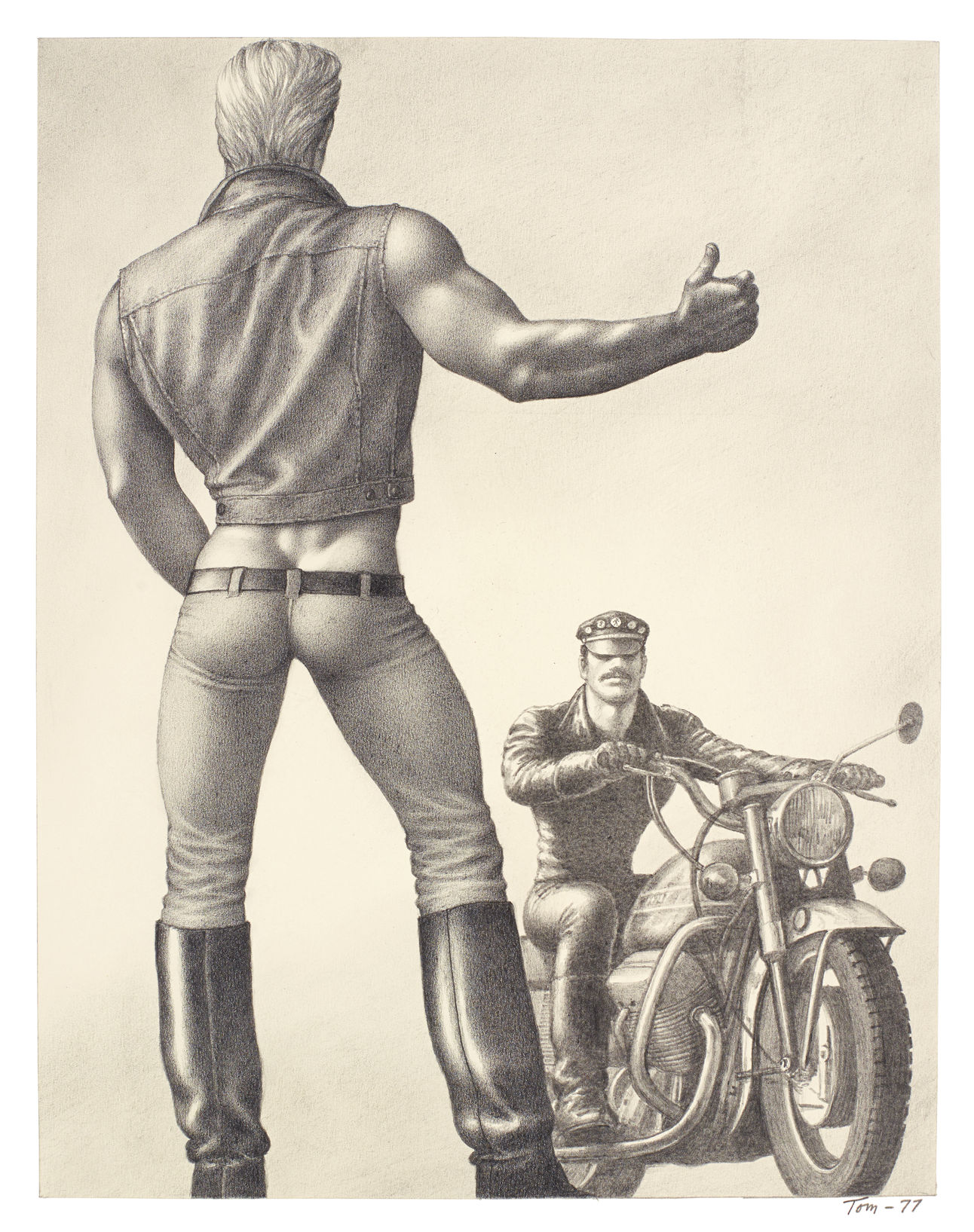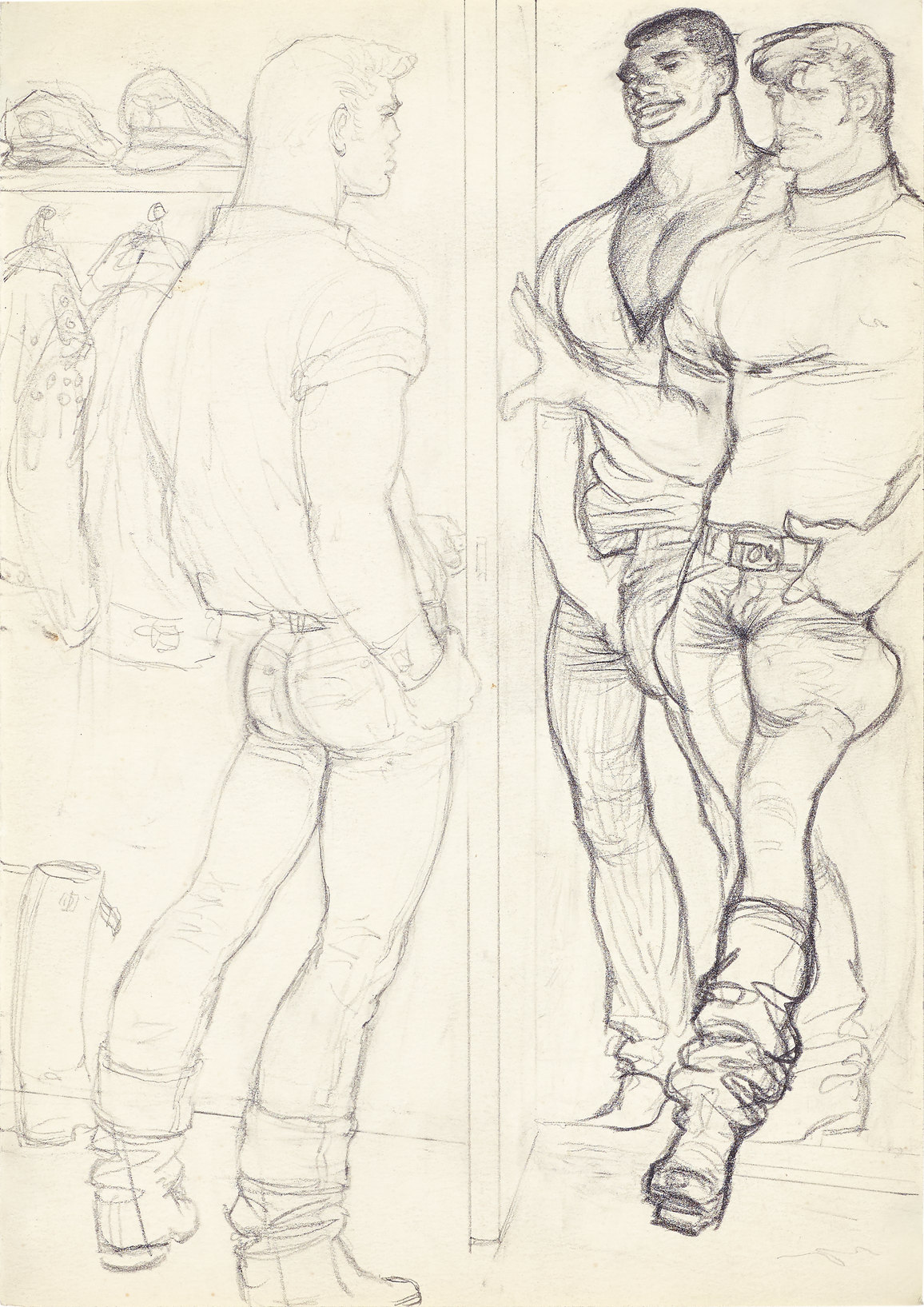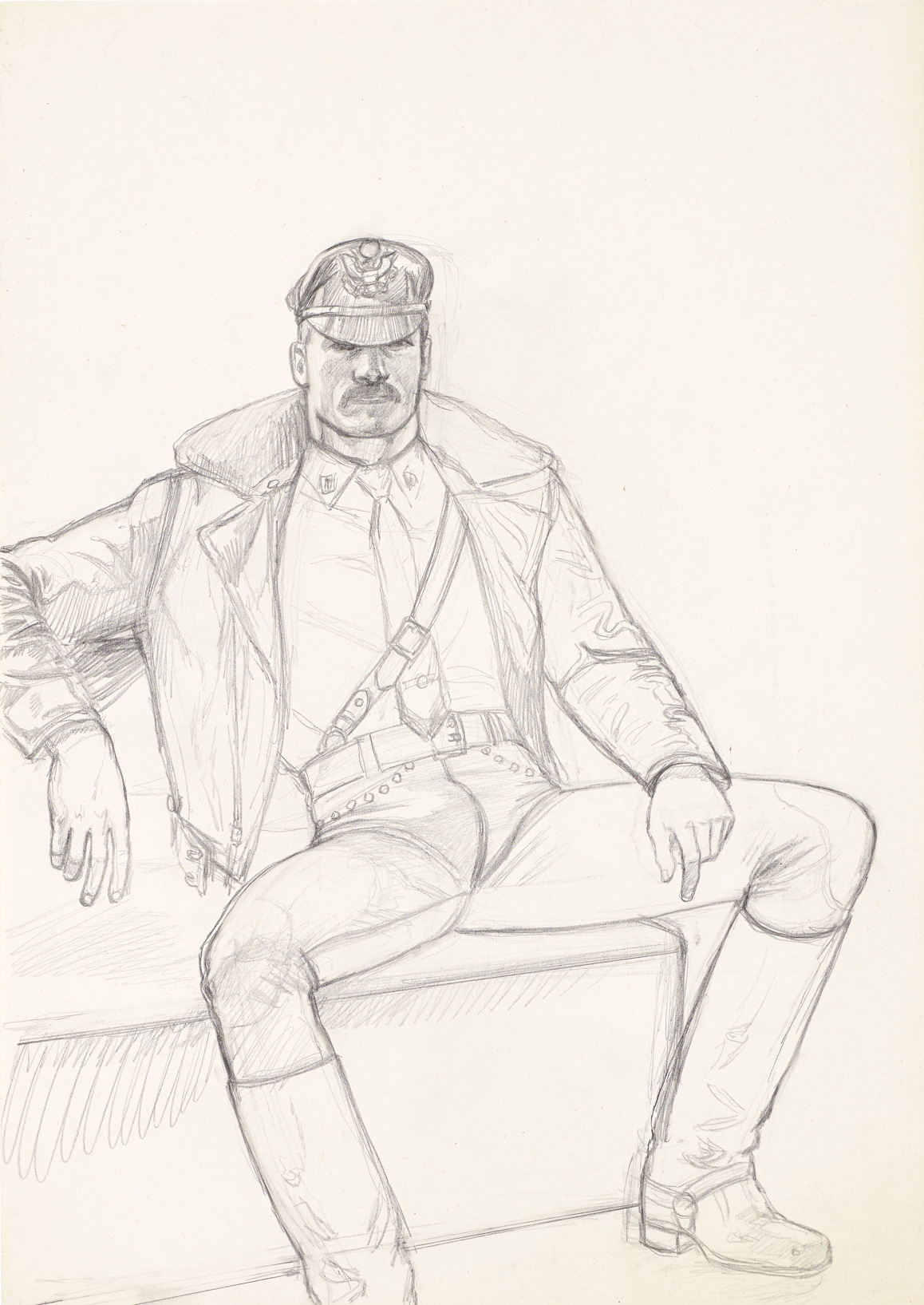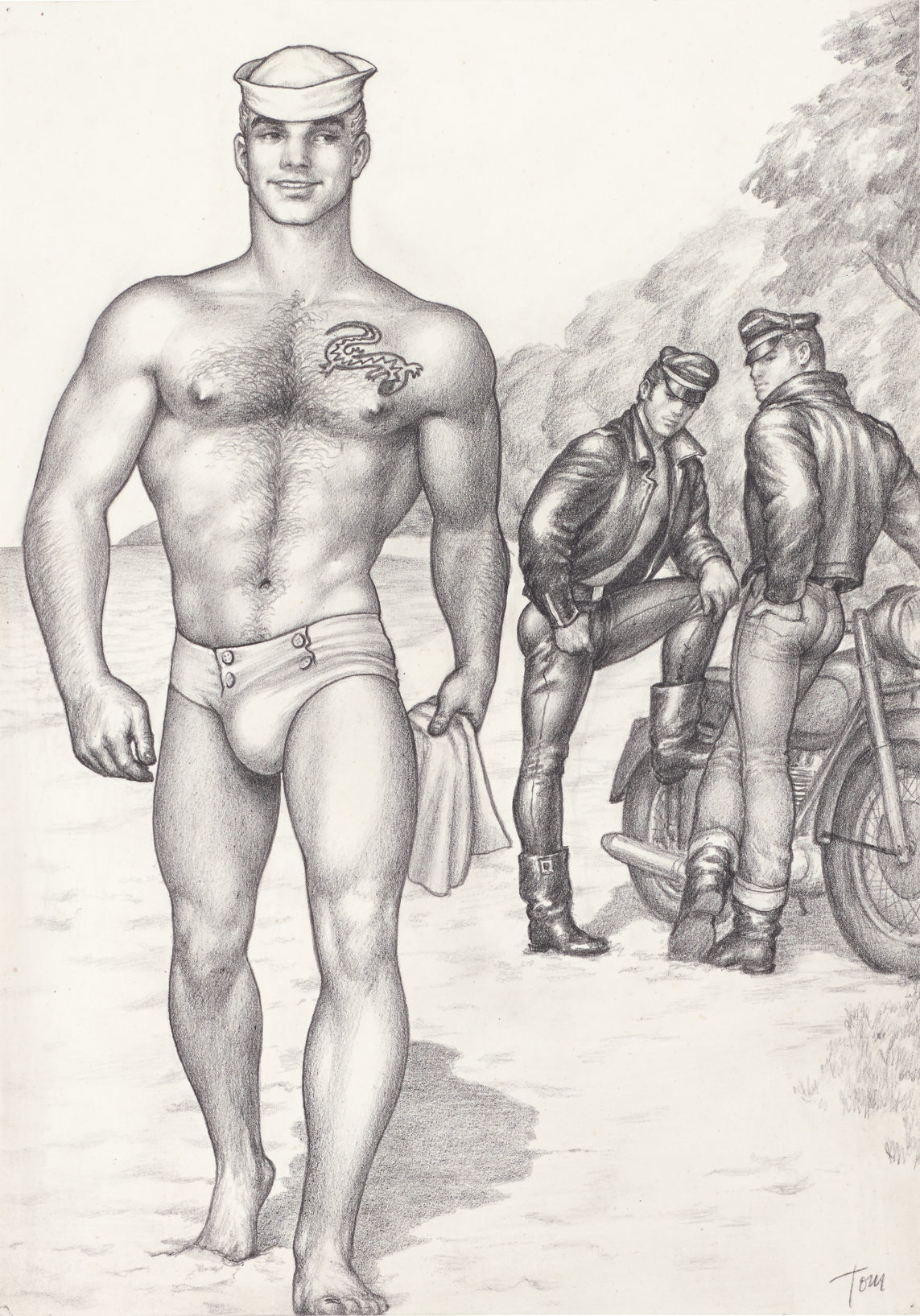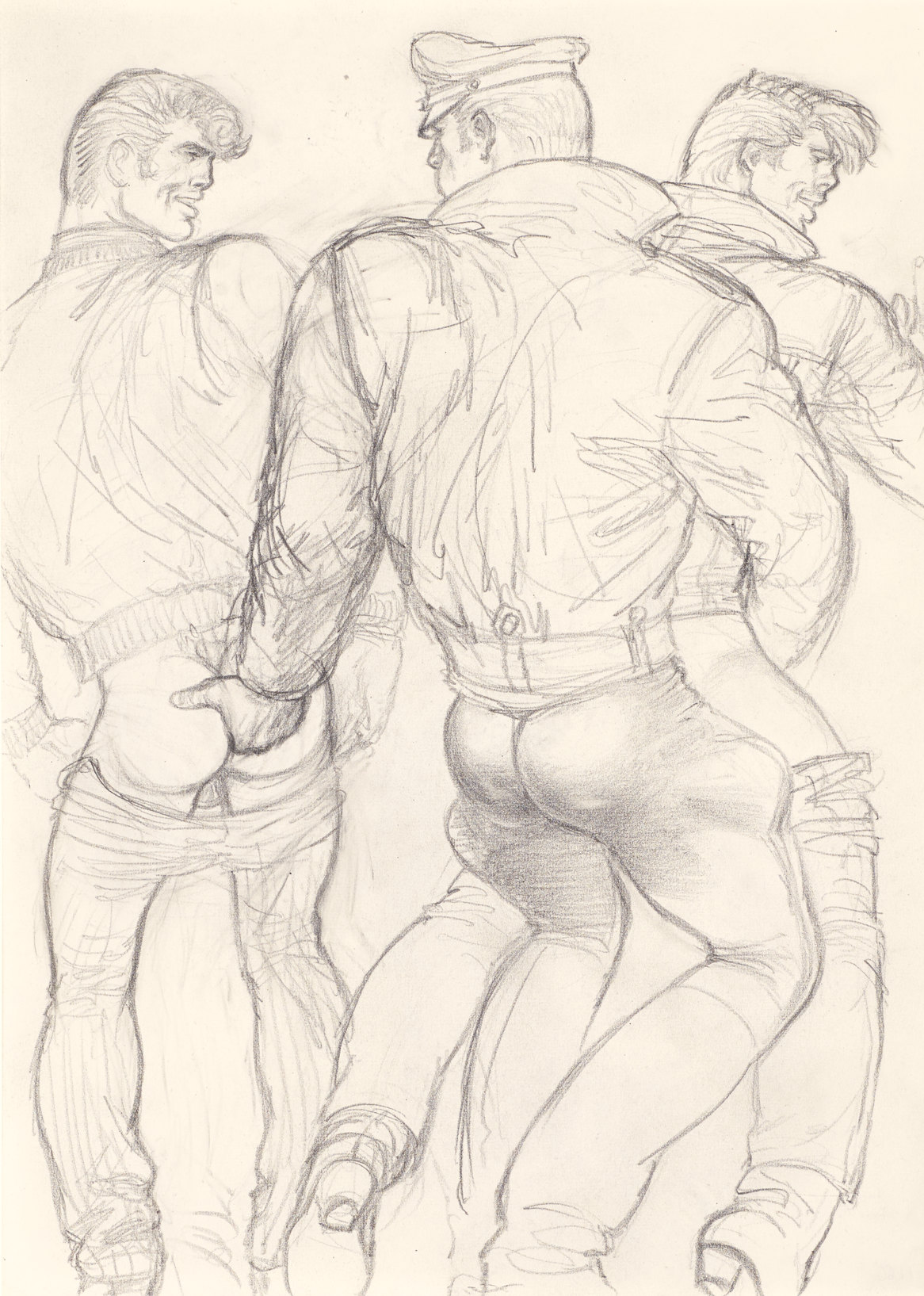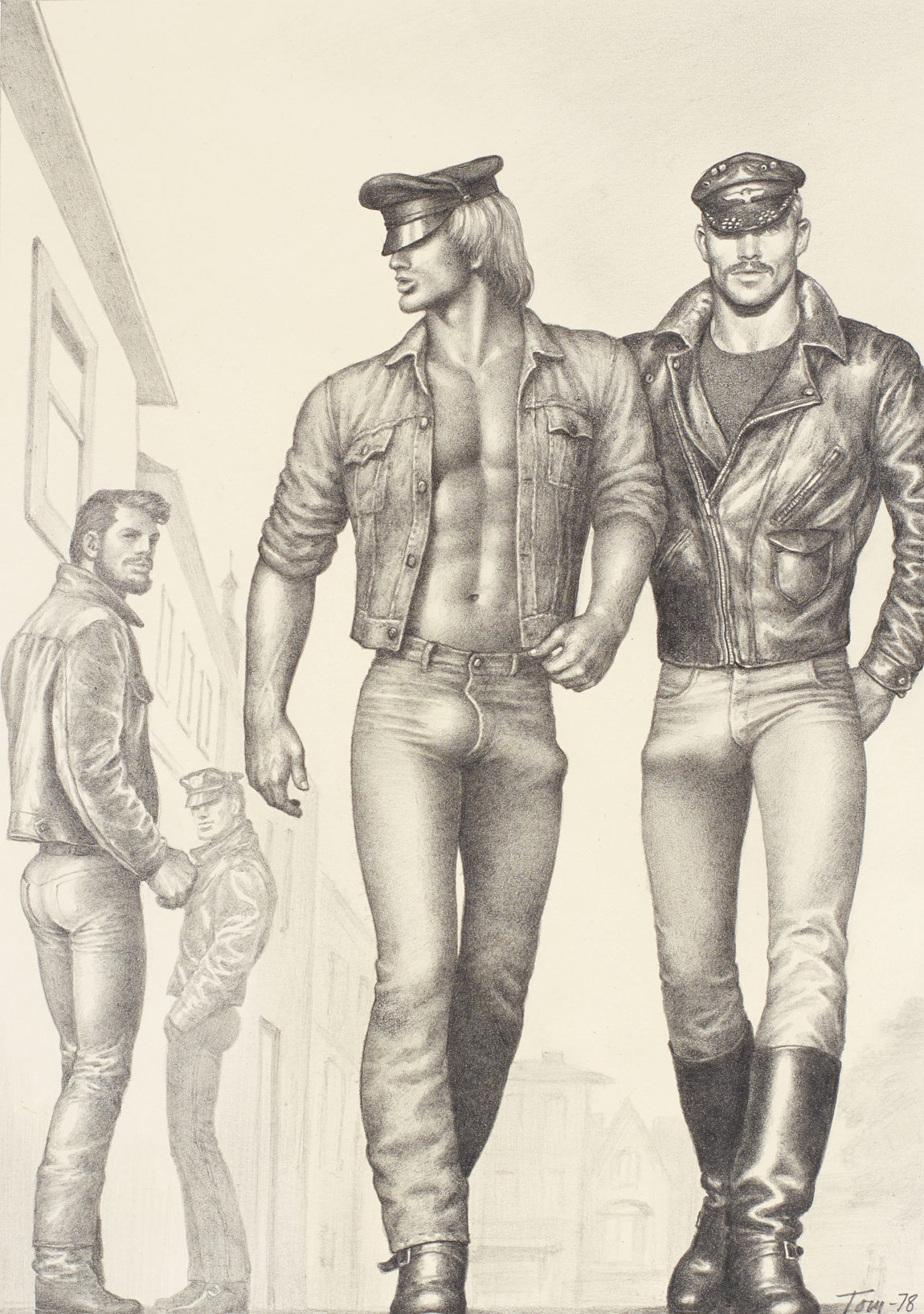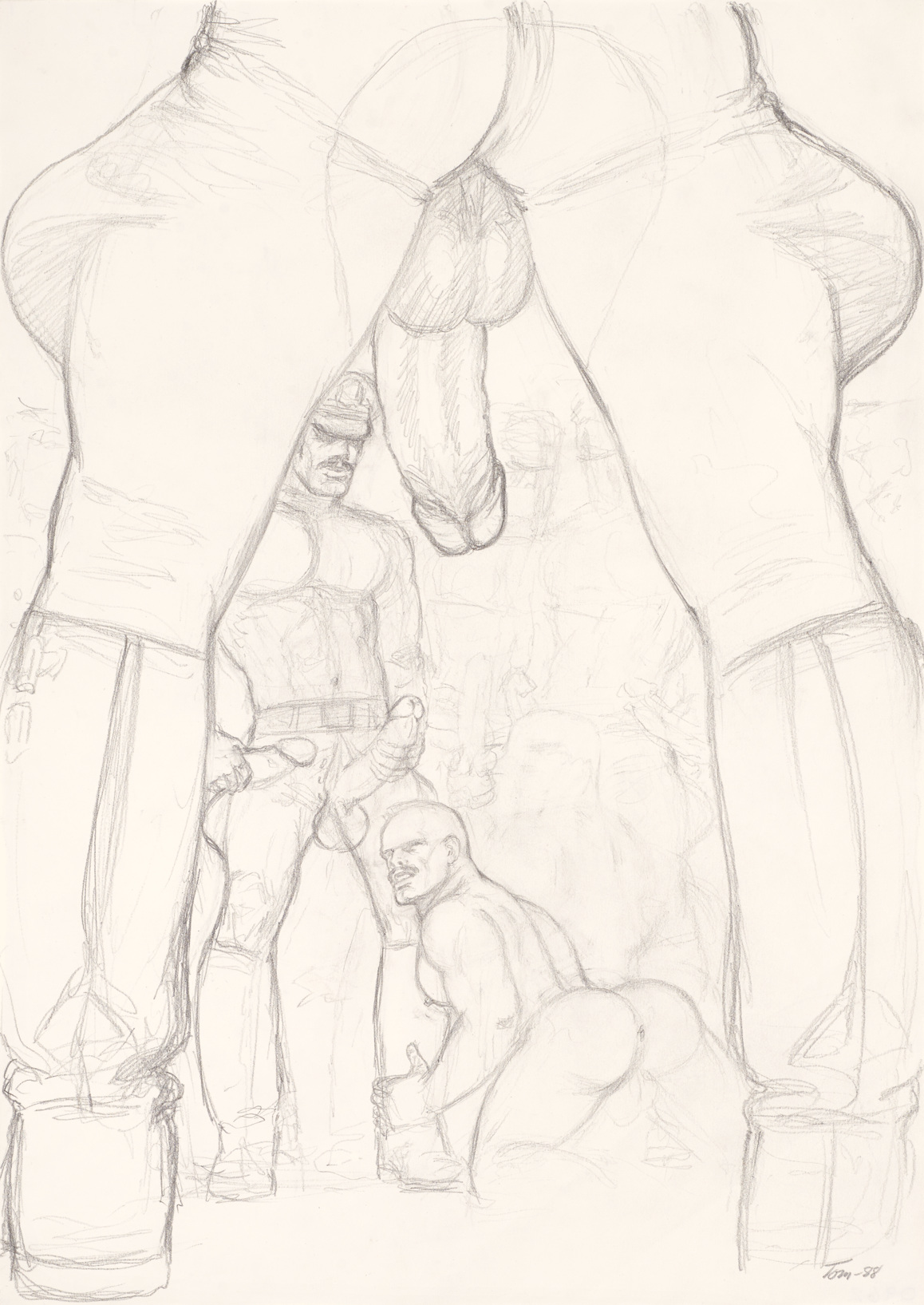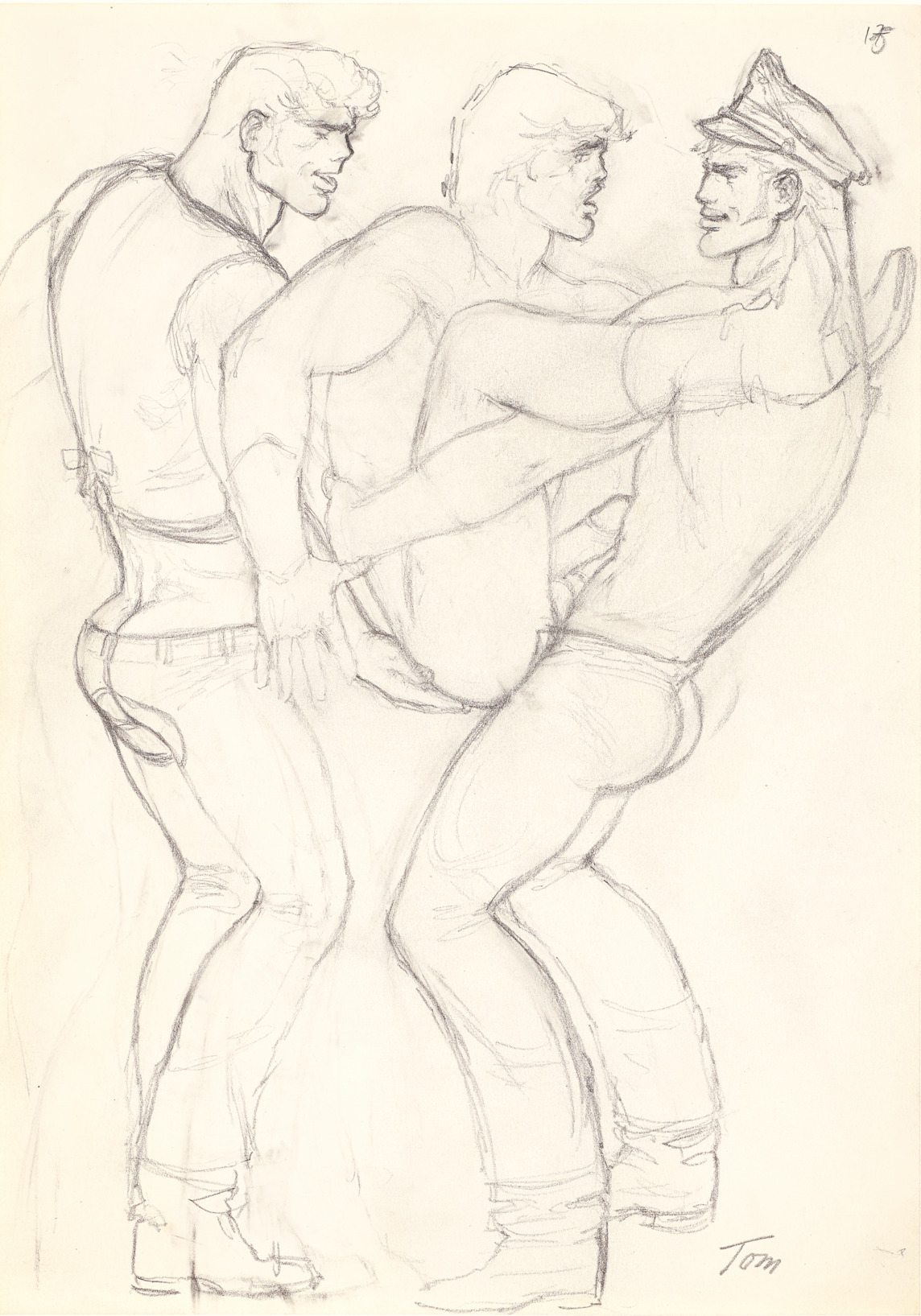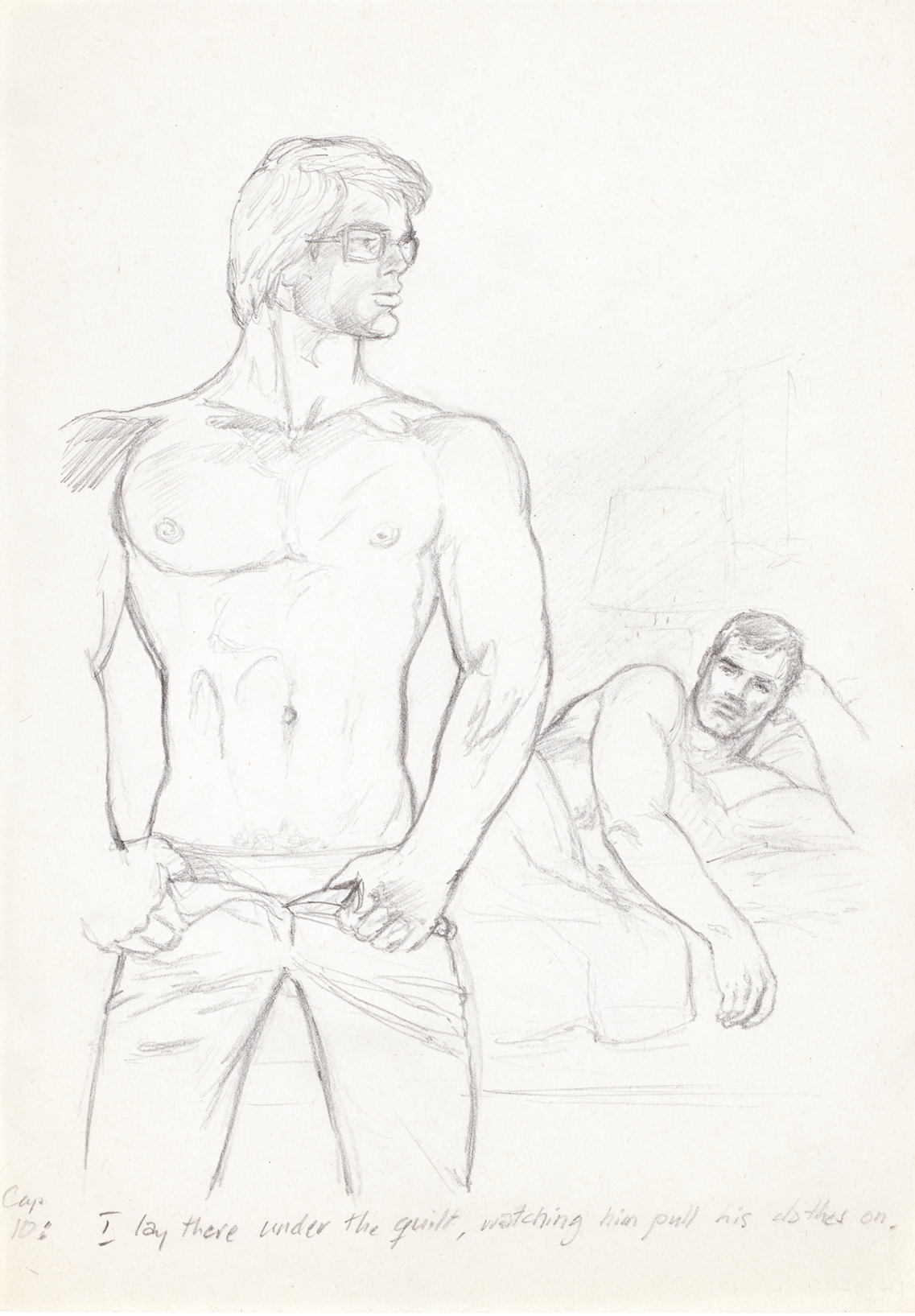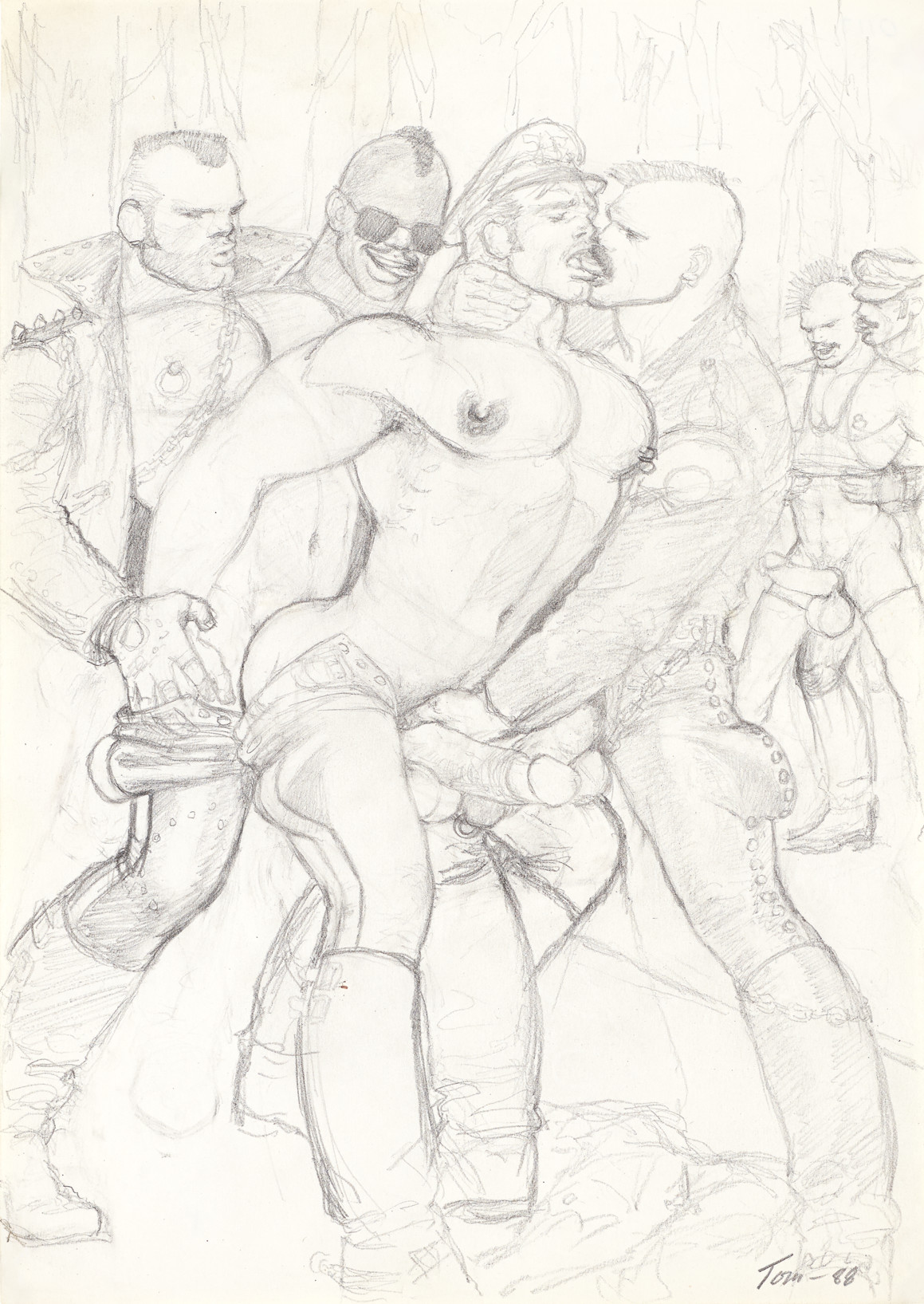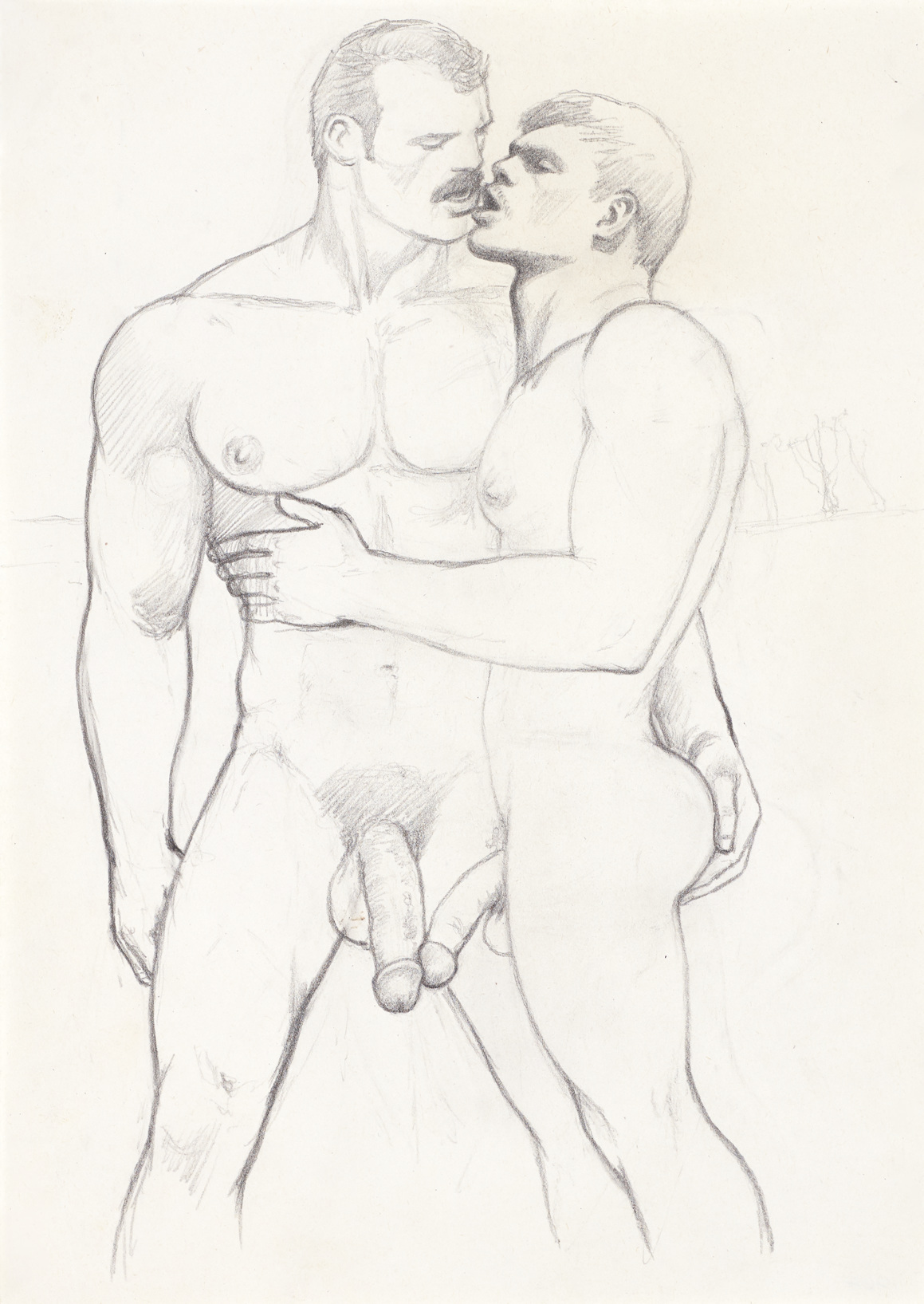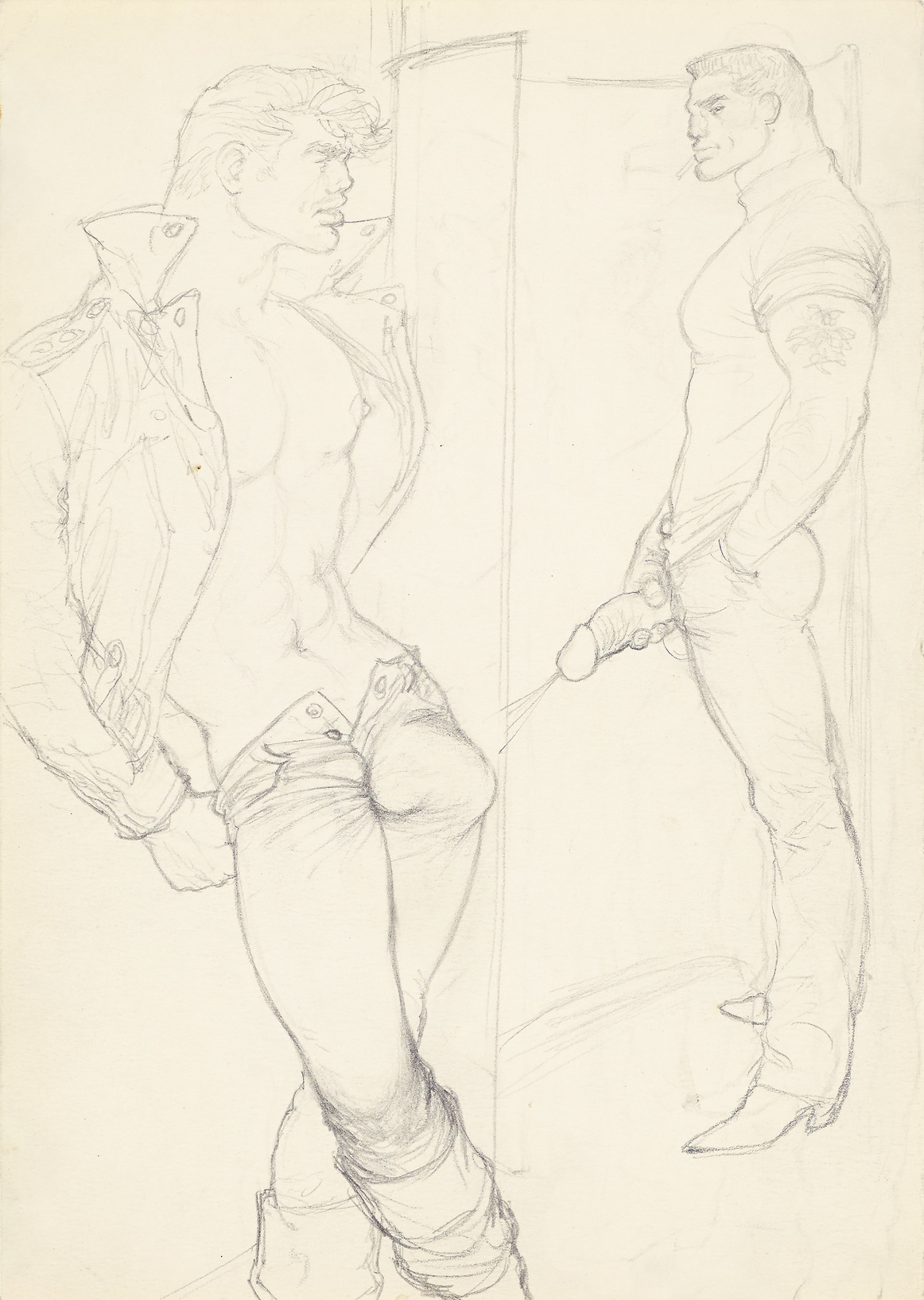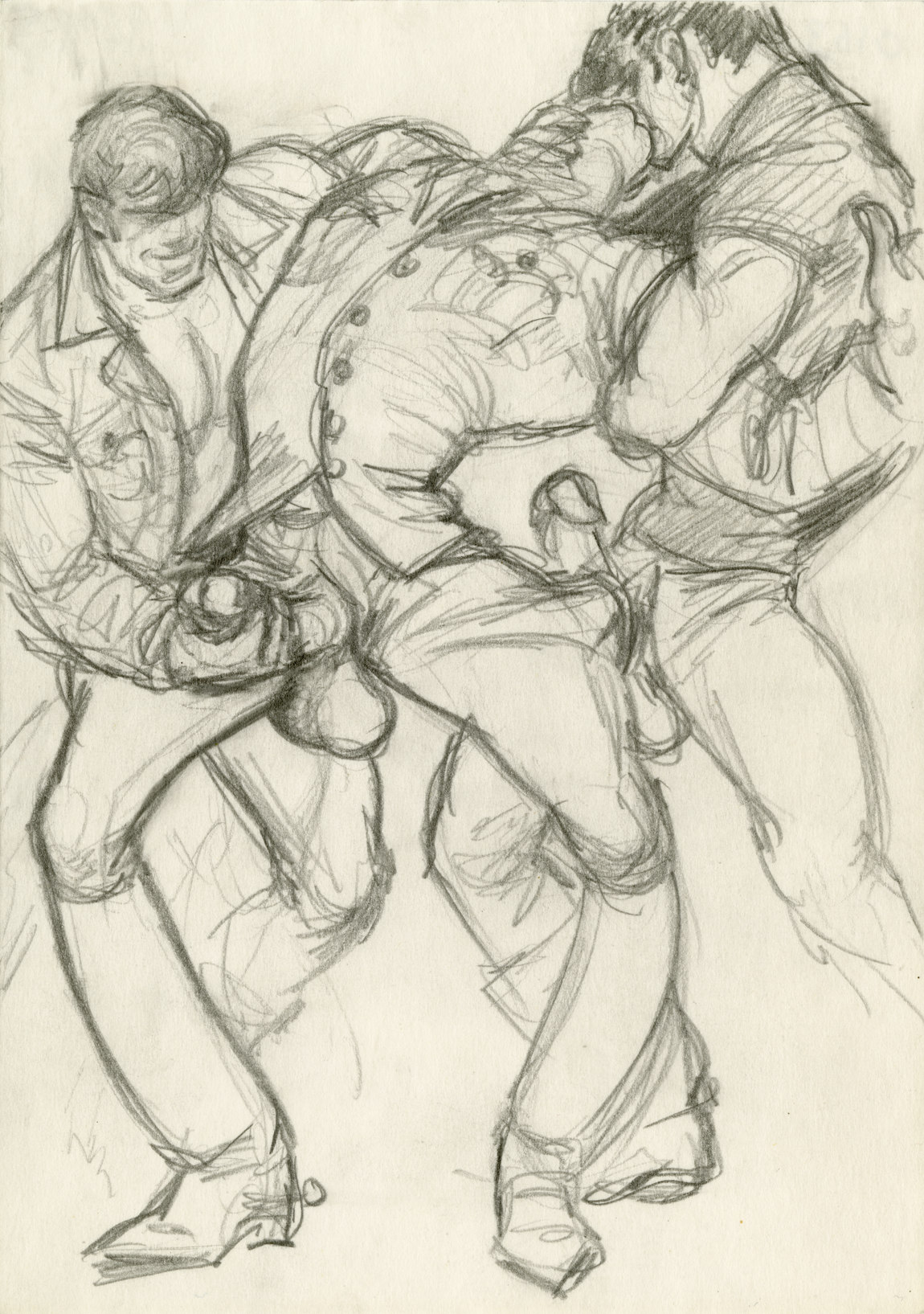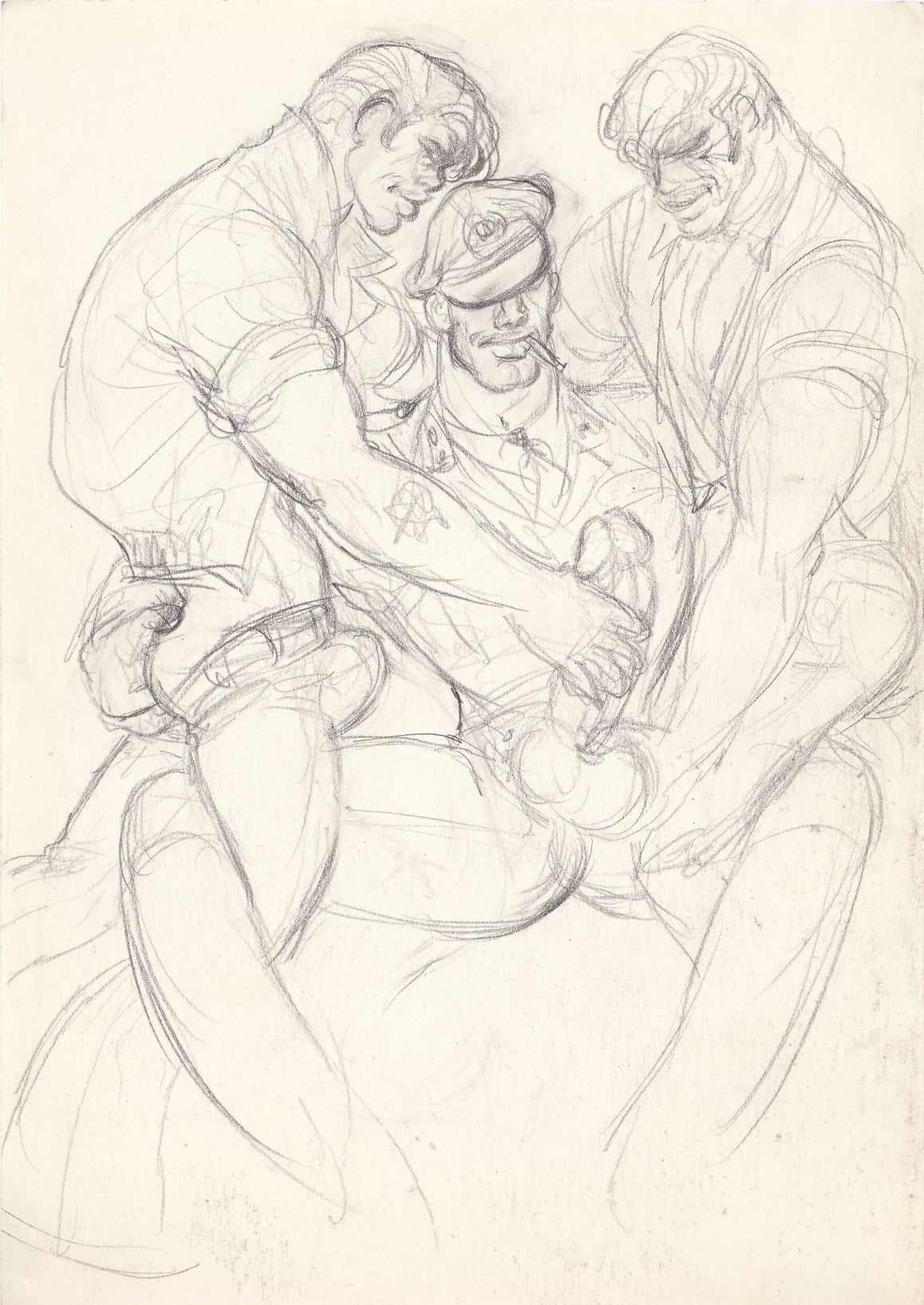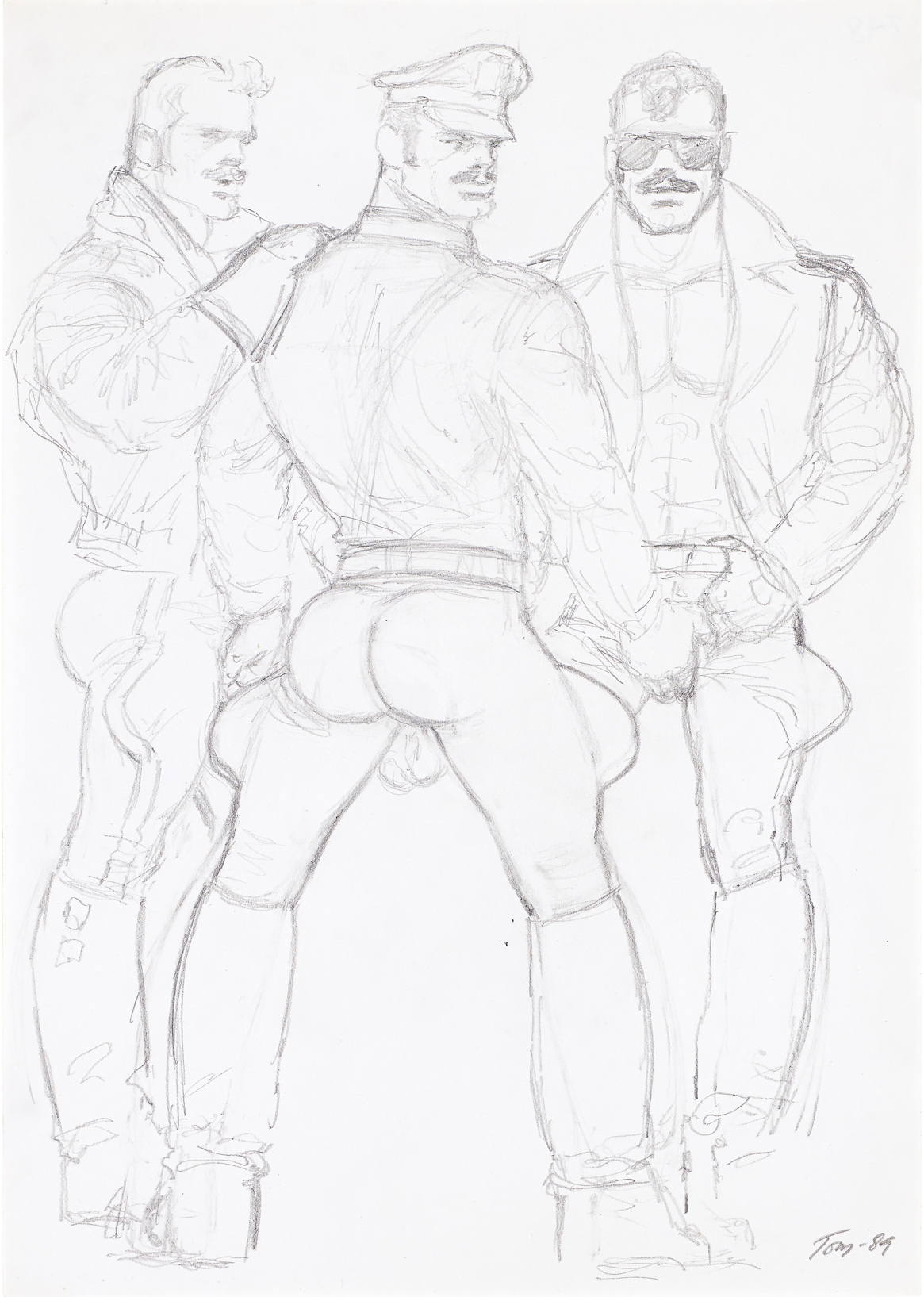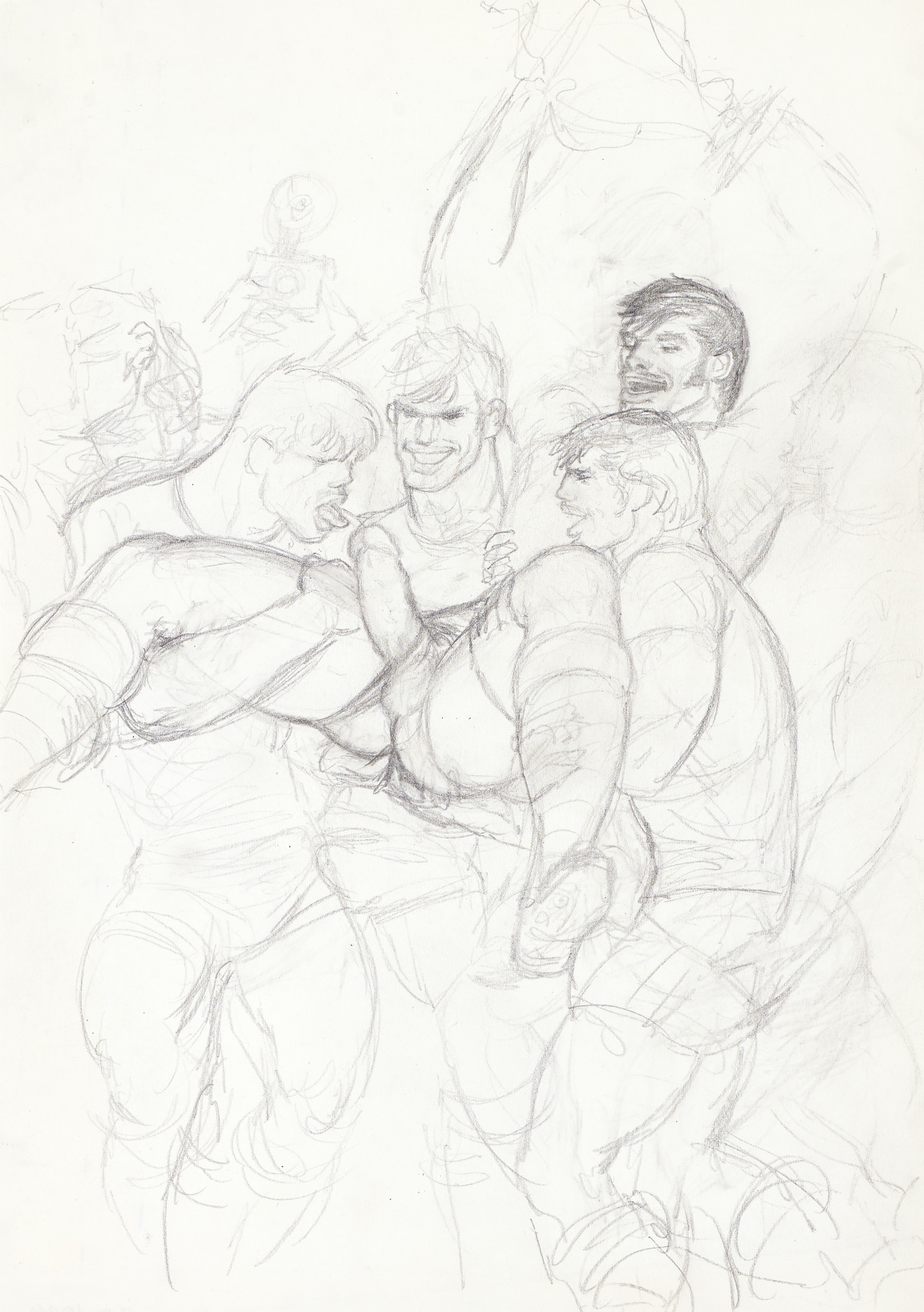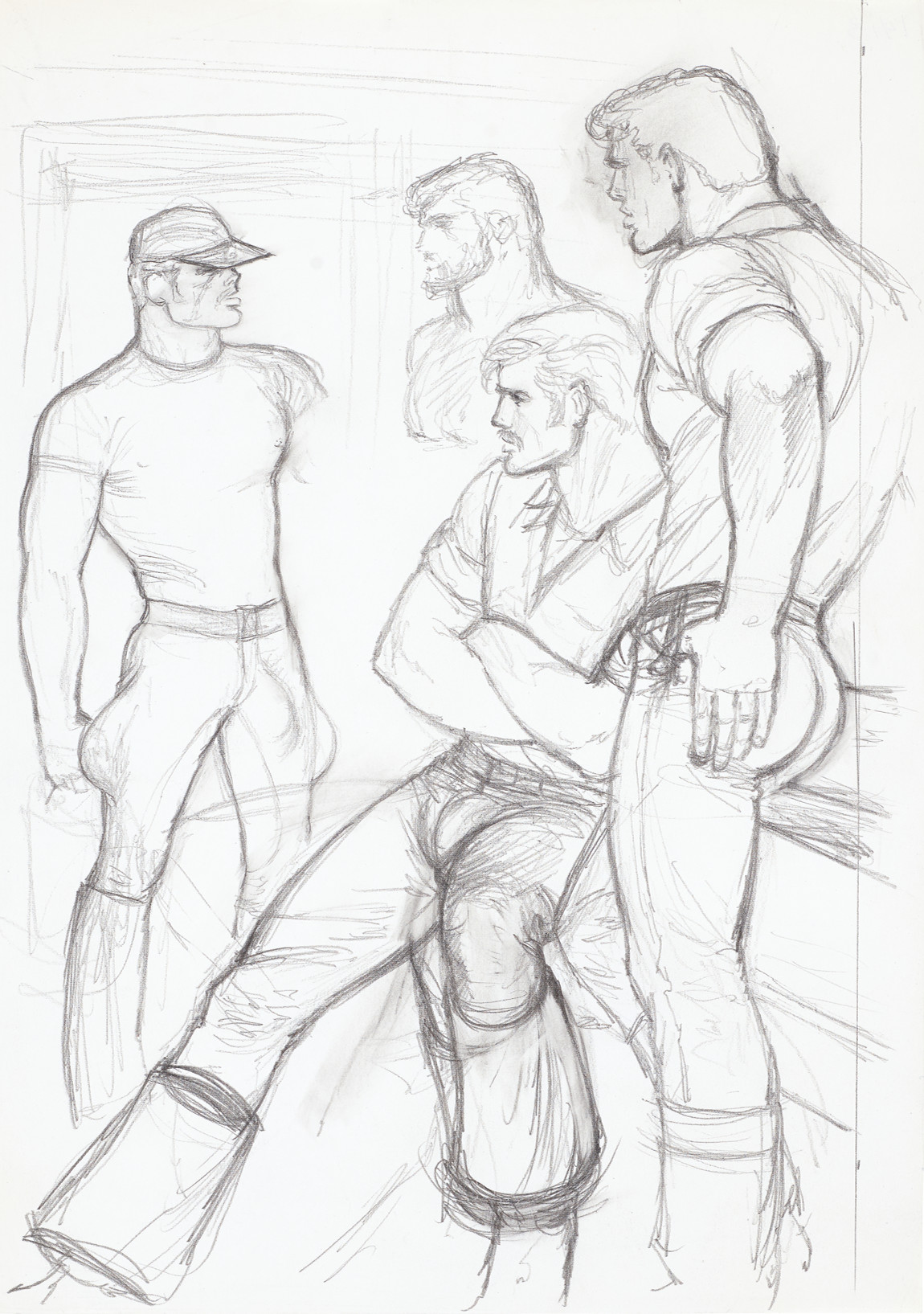Tom of Finland
Die Tankstelle, Bülowstraße 18
Works
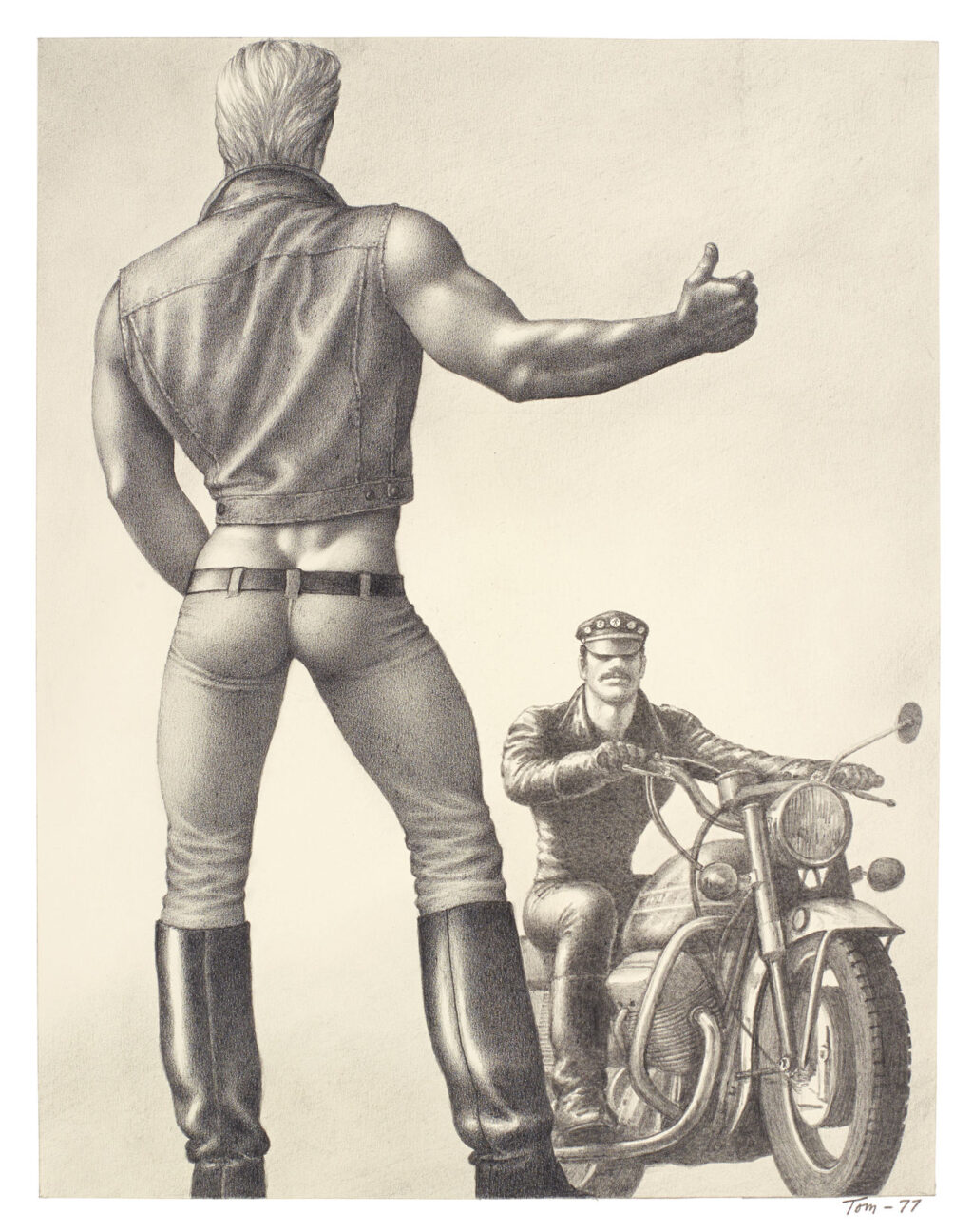
Untitled (Peter Berlin)
1977
Graphite on paper
40 × 31.2 cm

Untitled (Preparatory drawing)
c. 1967
Graphite on paper
21.1 × 14.9 cm
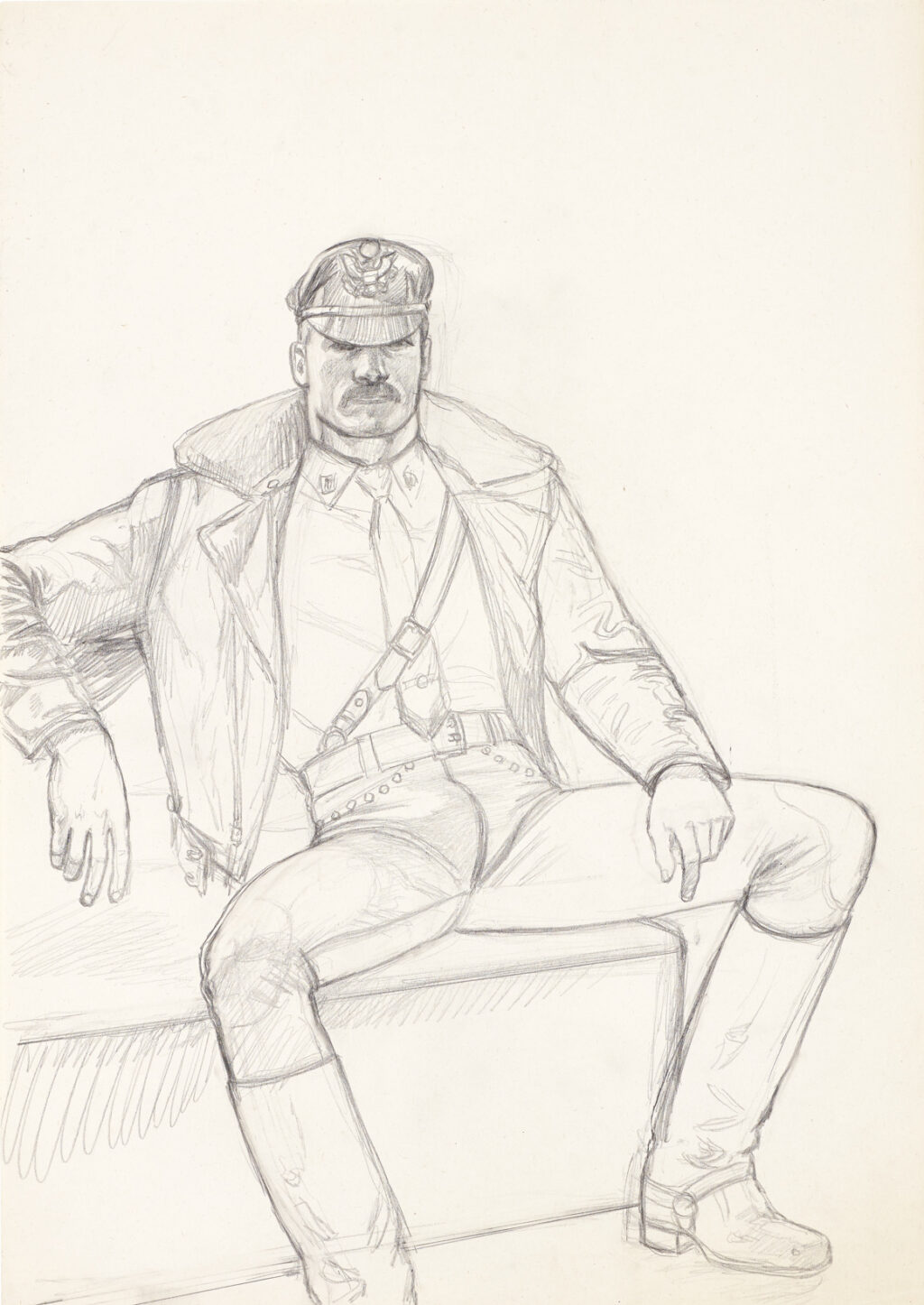
Untitled (Preparatory drawing)
1981
Graphite on paper
42.1 × 29.8 cm
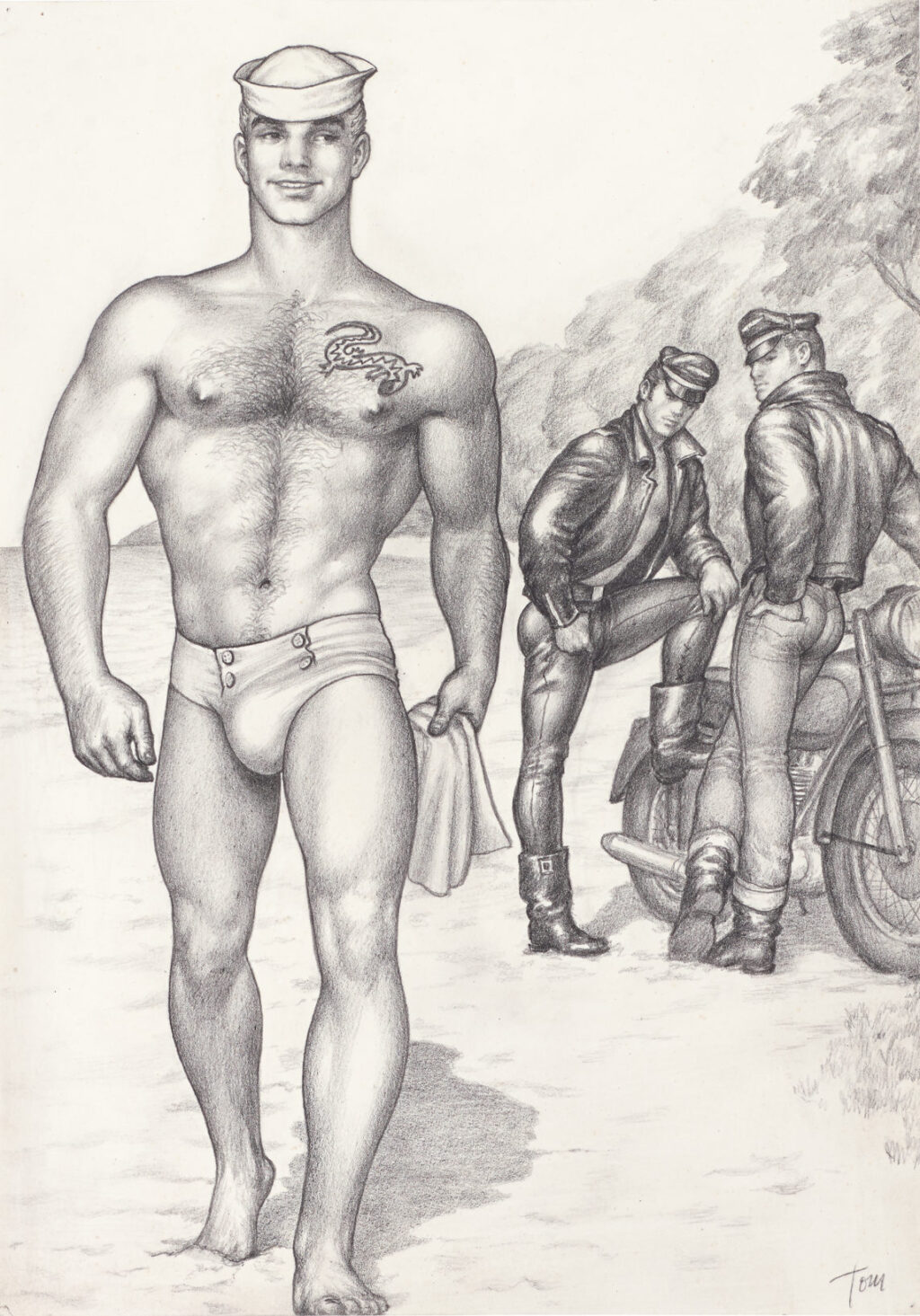
Untitled (From “The Tattoed Sailor”)
1962
Graphite on paper
29.5 × 20.9 cm
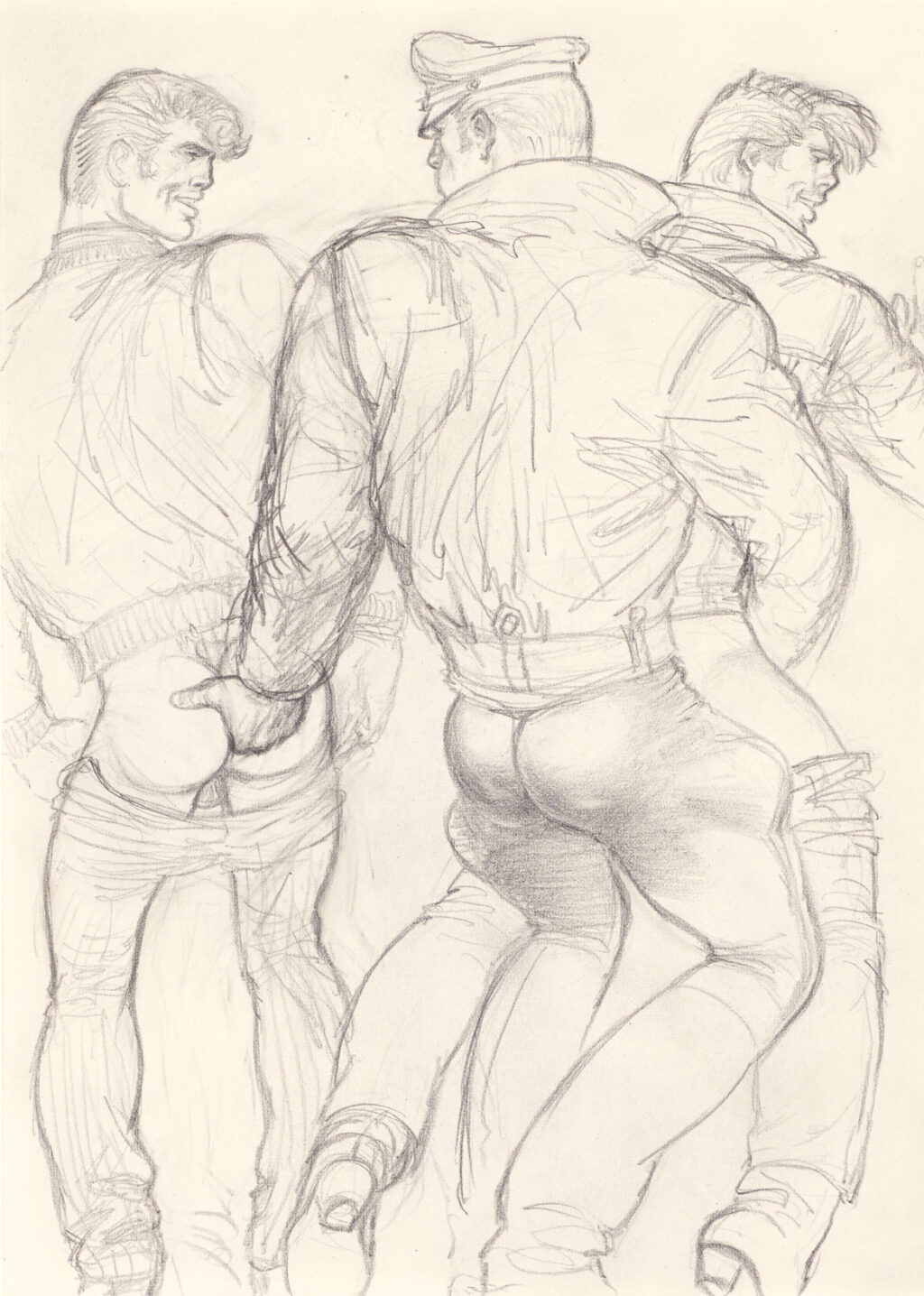
Untitled (Preparatory drawing)
c. 1965
Graphite on paper
29.5 × 21.1 cm
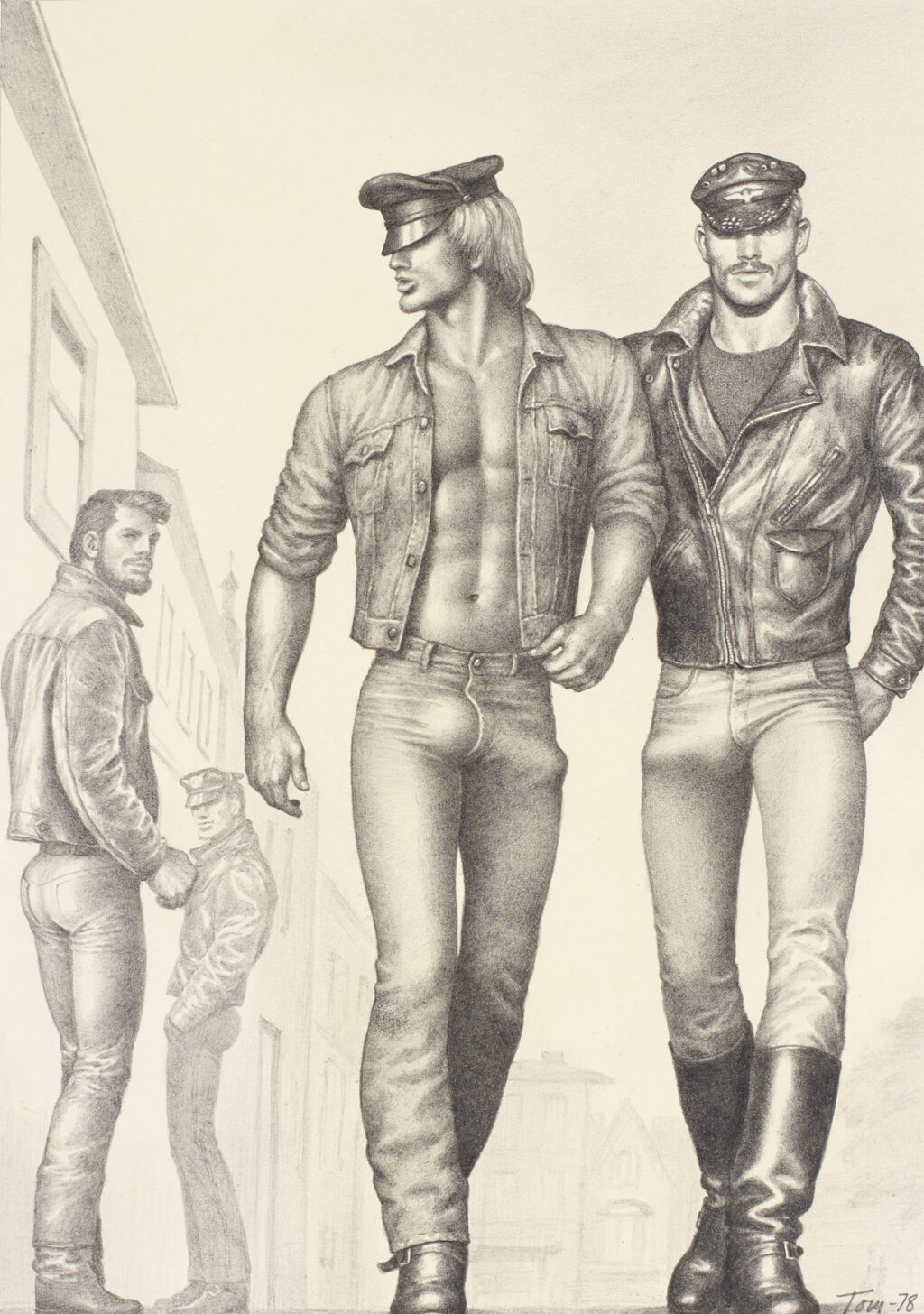
Untitled (Peter Berlin)
1978
Graphite on paper
40 × 29.6 cm

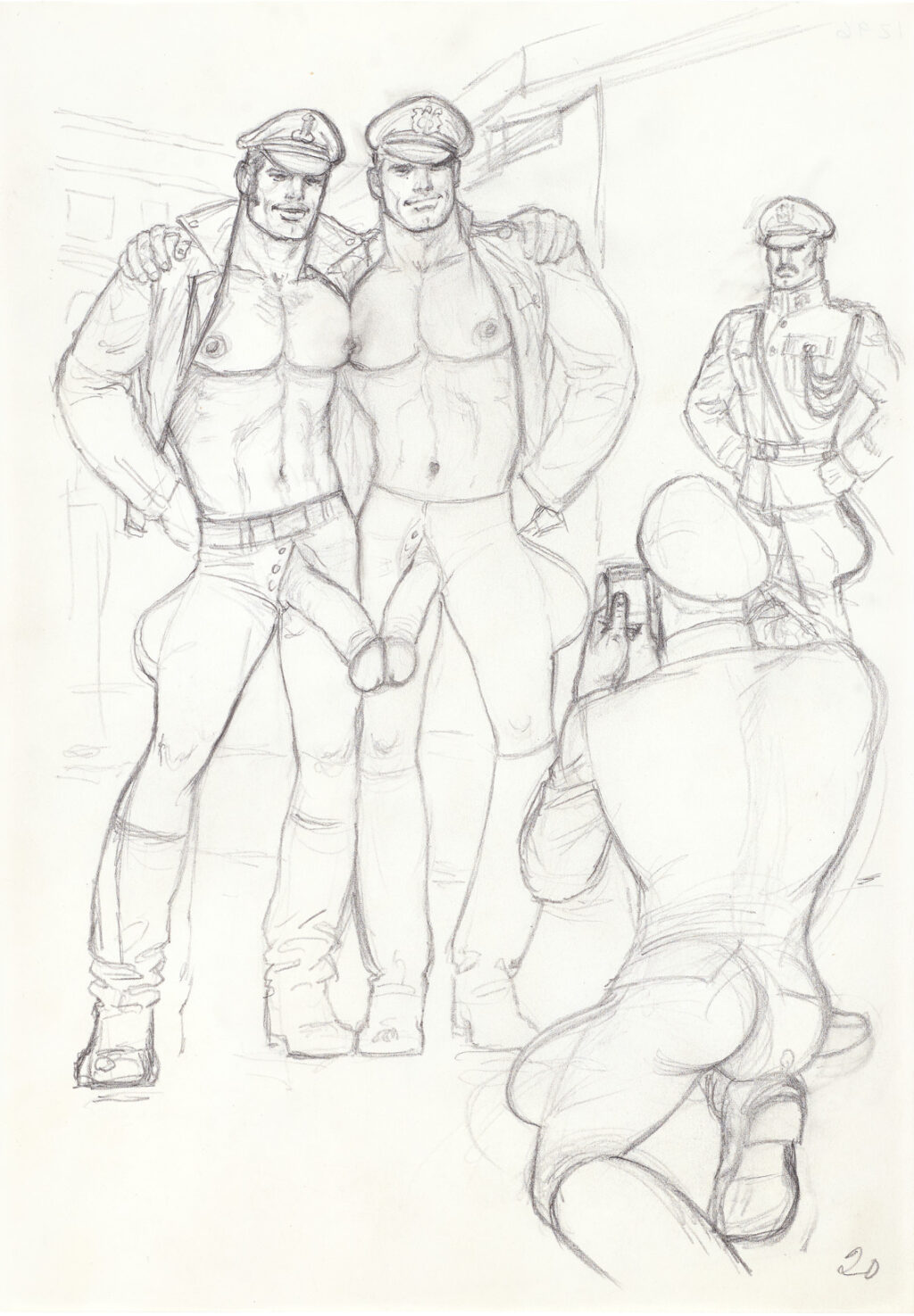
Untitled (Preparatory drawing for Kake, vol. 13, “Sightseeing,” XX)
1973
Graphite on paper
29.7 × 21.1 cm

Untitled
1965
Graphite on paper
31.1 × 22.2 cm

Untitled (Preparatory drawing)
1988
Graphite on paper
40.6 × 29.8 cm
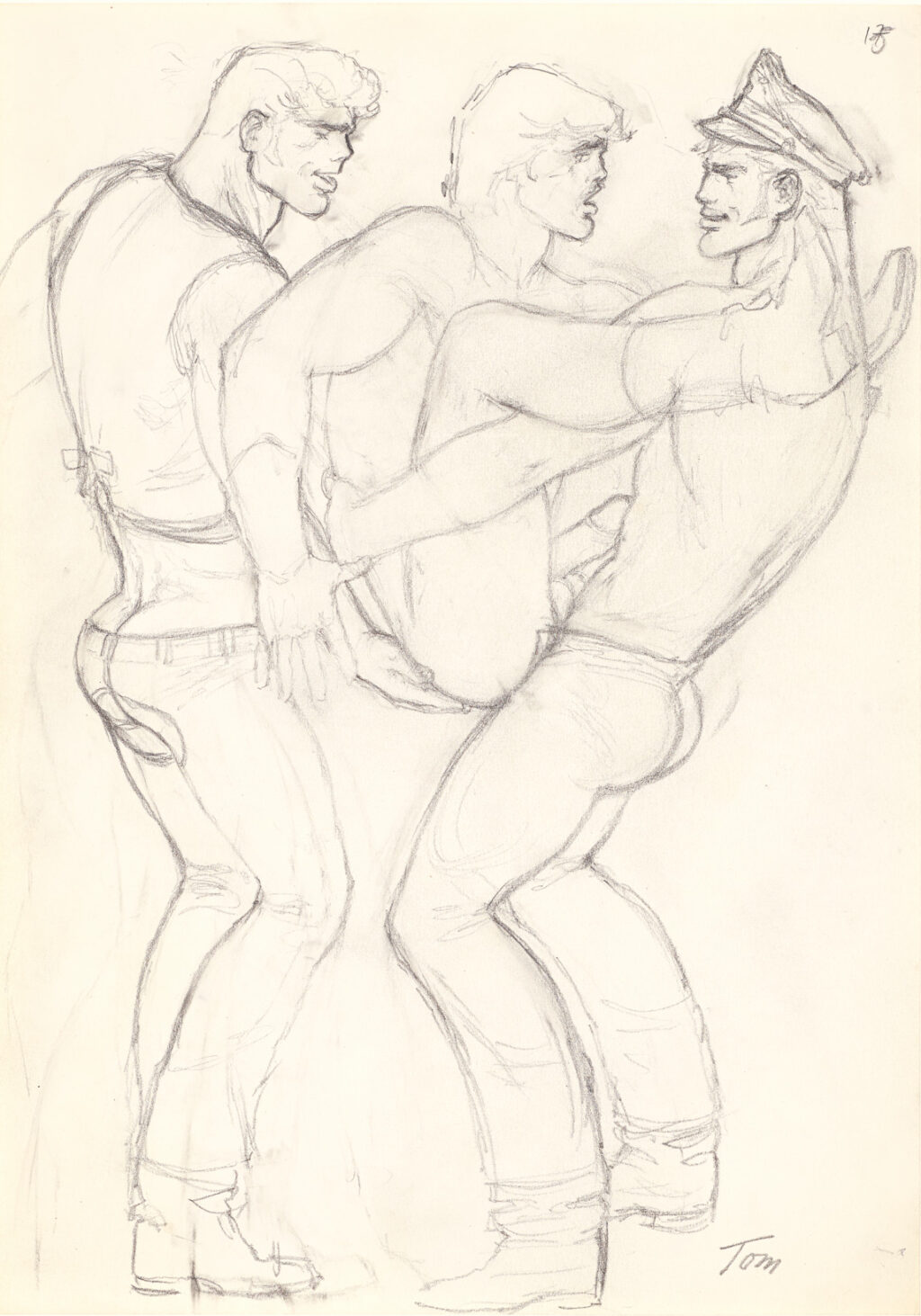
Untitled (Preparatory drawing for “Ringo and the Renegades”)
1973
Graphite on paper
29.8 × 21 cm
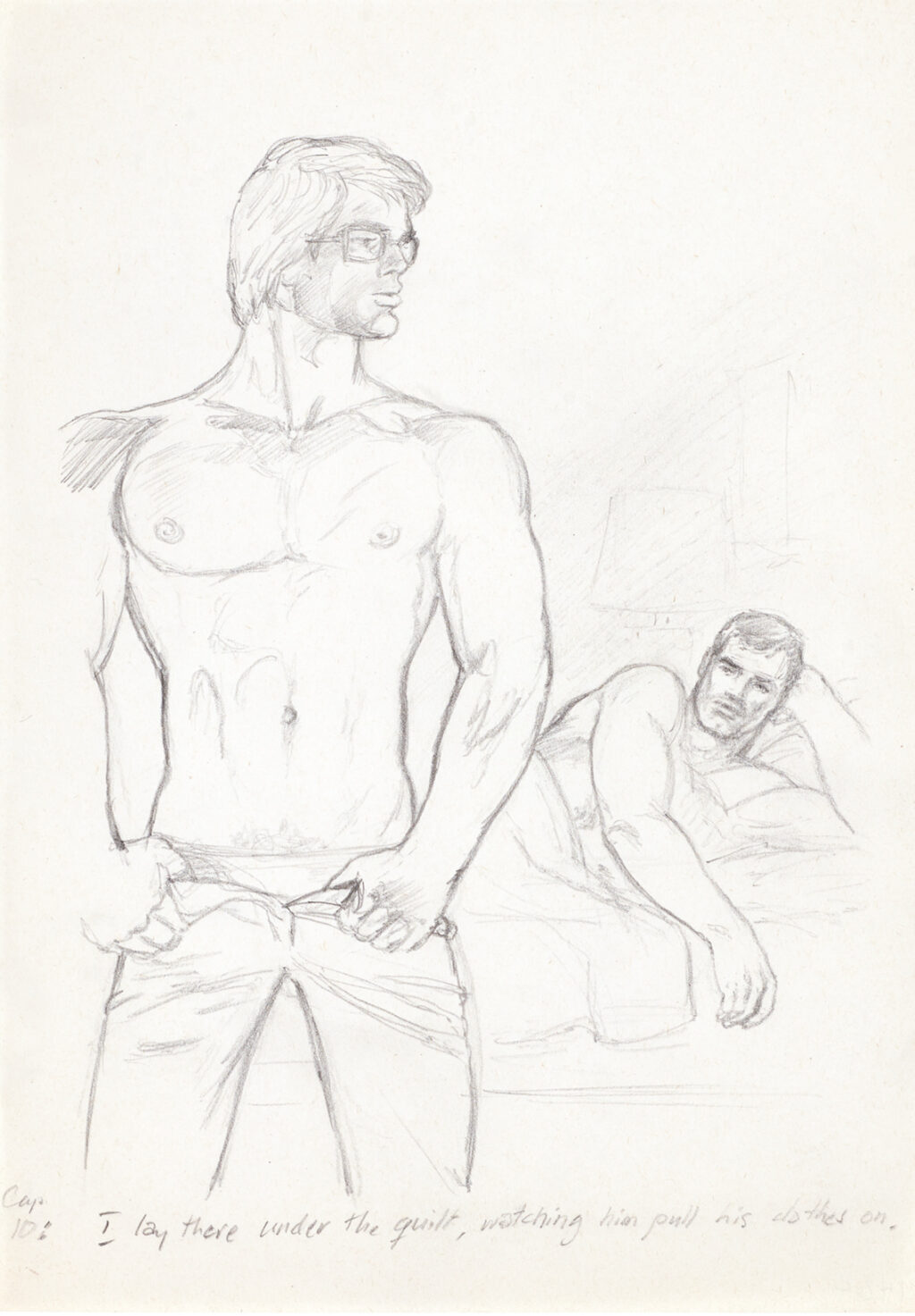
Untitled (Preparatory drawing for “The Front Runner” by Patricia Nell Warren)
1975
Graphite on paper
29.7 × 21 cm
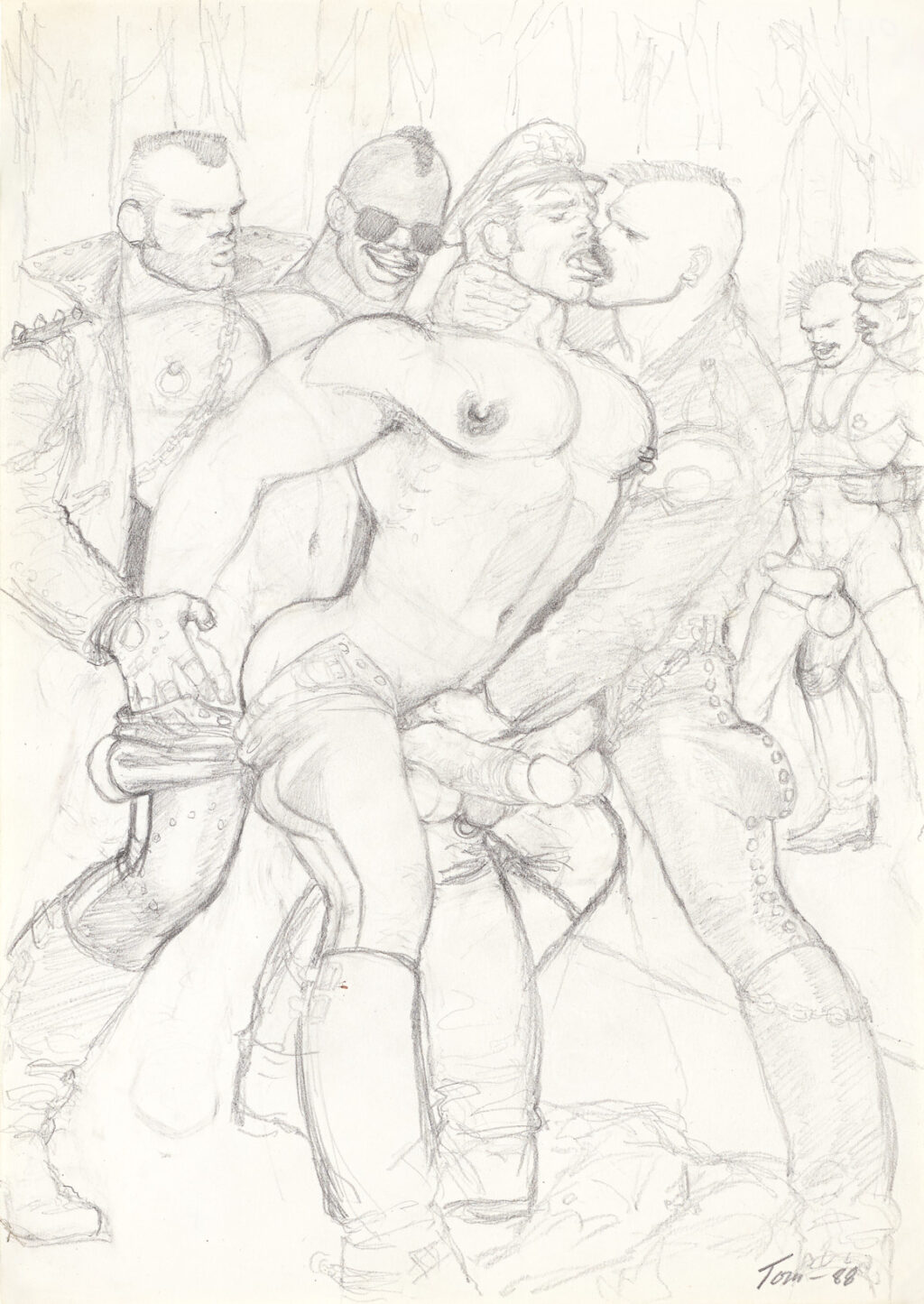
Untitled (Preparatory drawing)
1988
Graphite on paper
29.7 × 20.9 cm
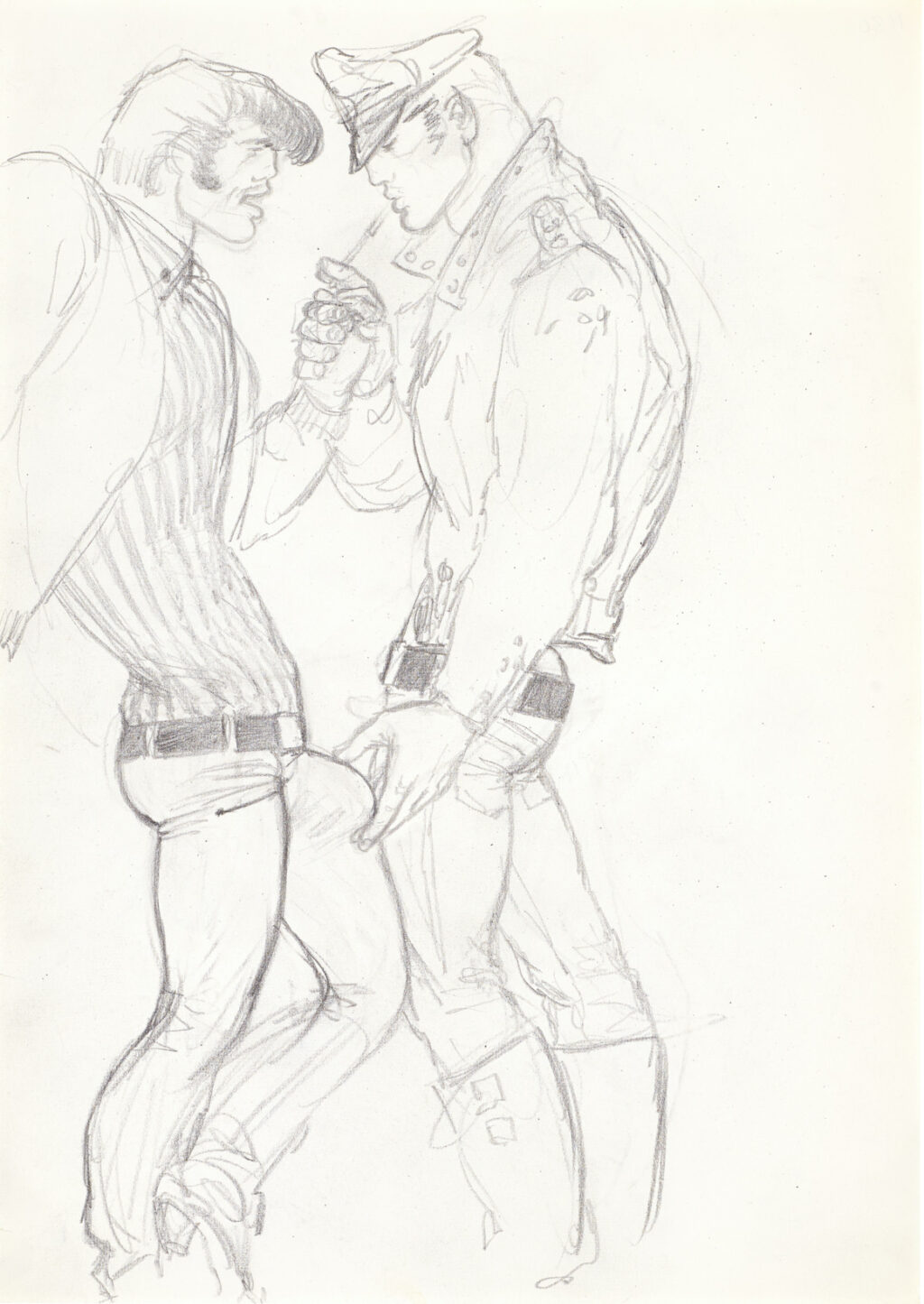
Untitled (Preparatory drawing)
ca. 1965
Graphite on paper
29.7 × 21 cm
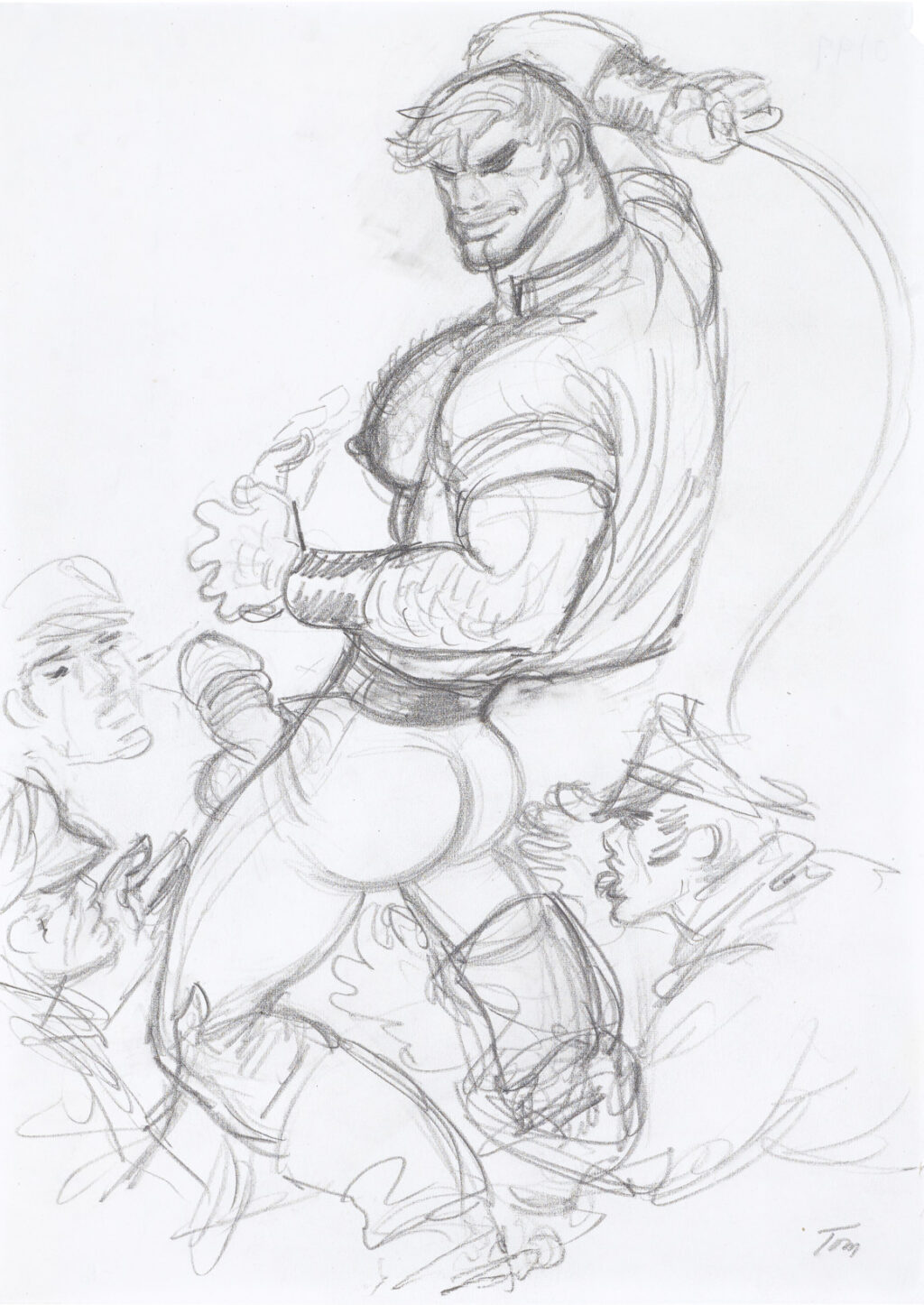
Untitled (Preparatory drawing)
c. 1965
Graphite on paper
21.1 × 29.5 cm
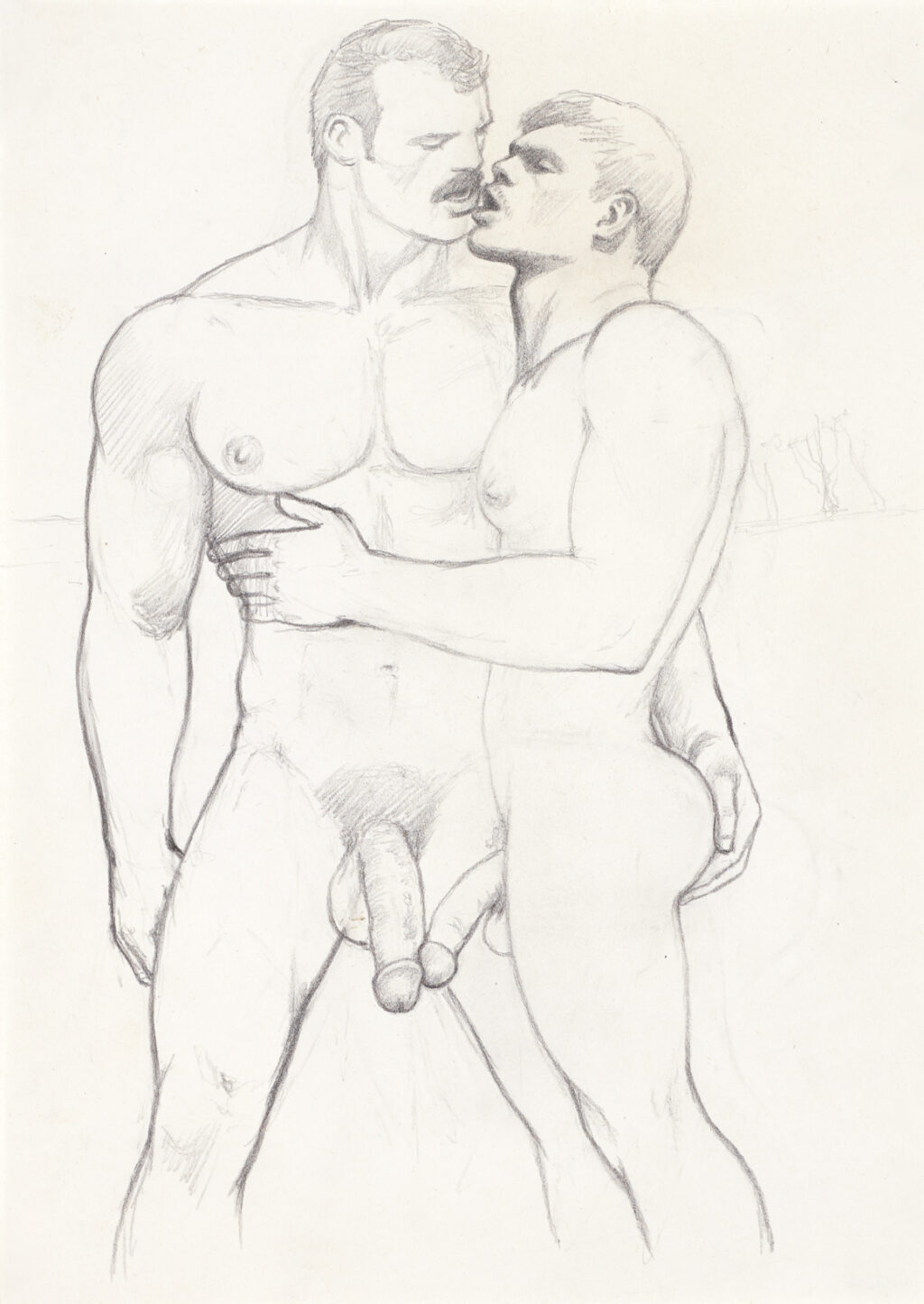
Untitled (Preparatory drawing)
1980
Graphite on paper
30 × 21 cm
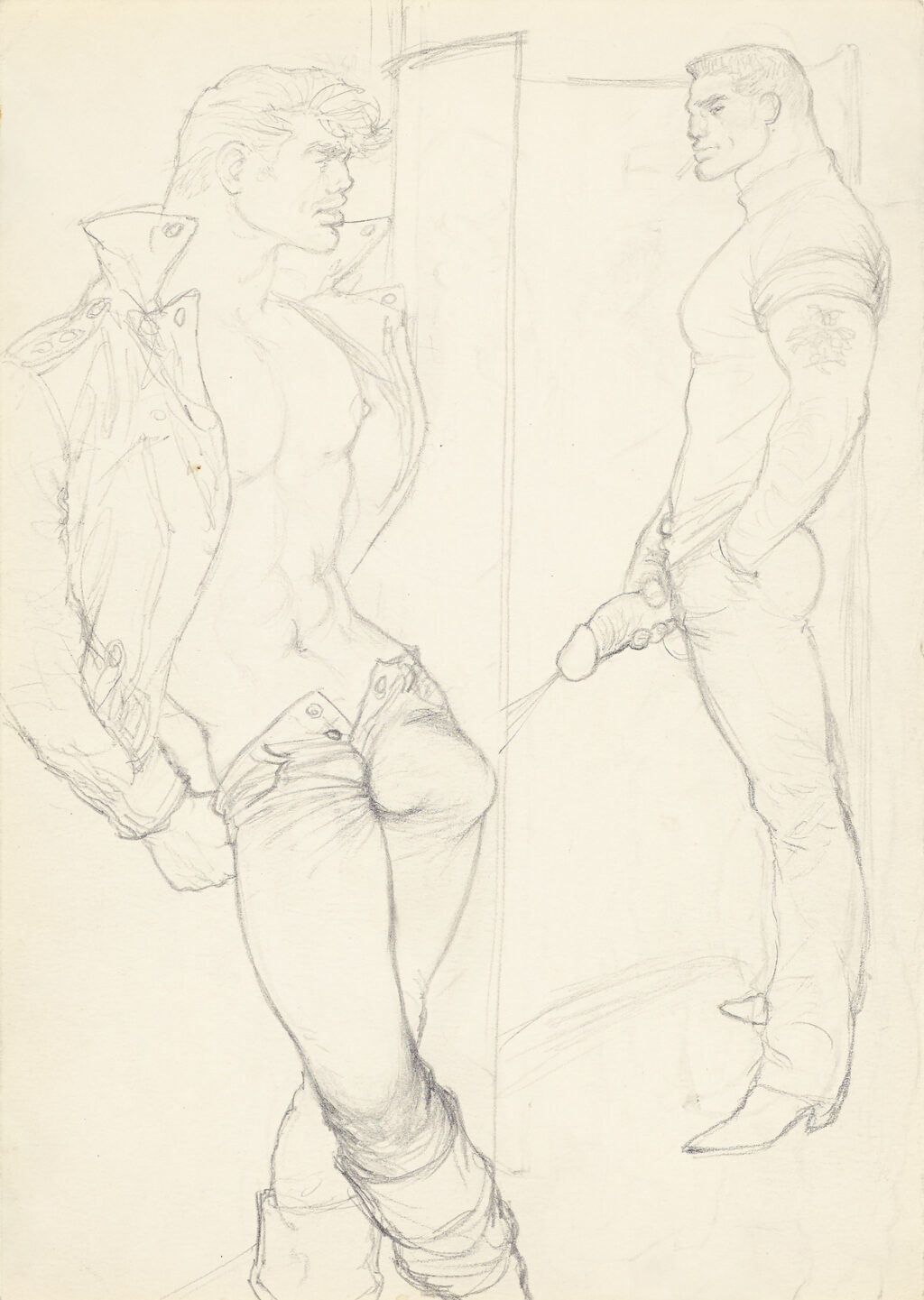
Untitled (Preparatory drawing)
c. 1966
Graphite on paper
20.9 × 14.9 cm
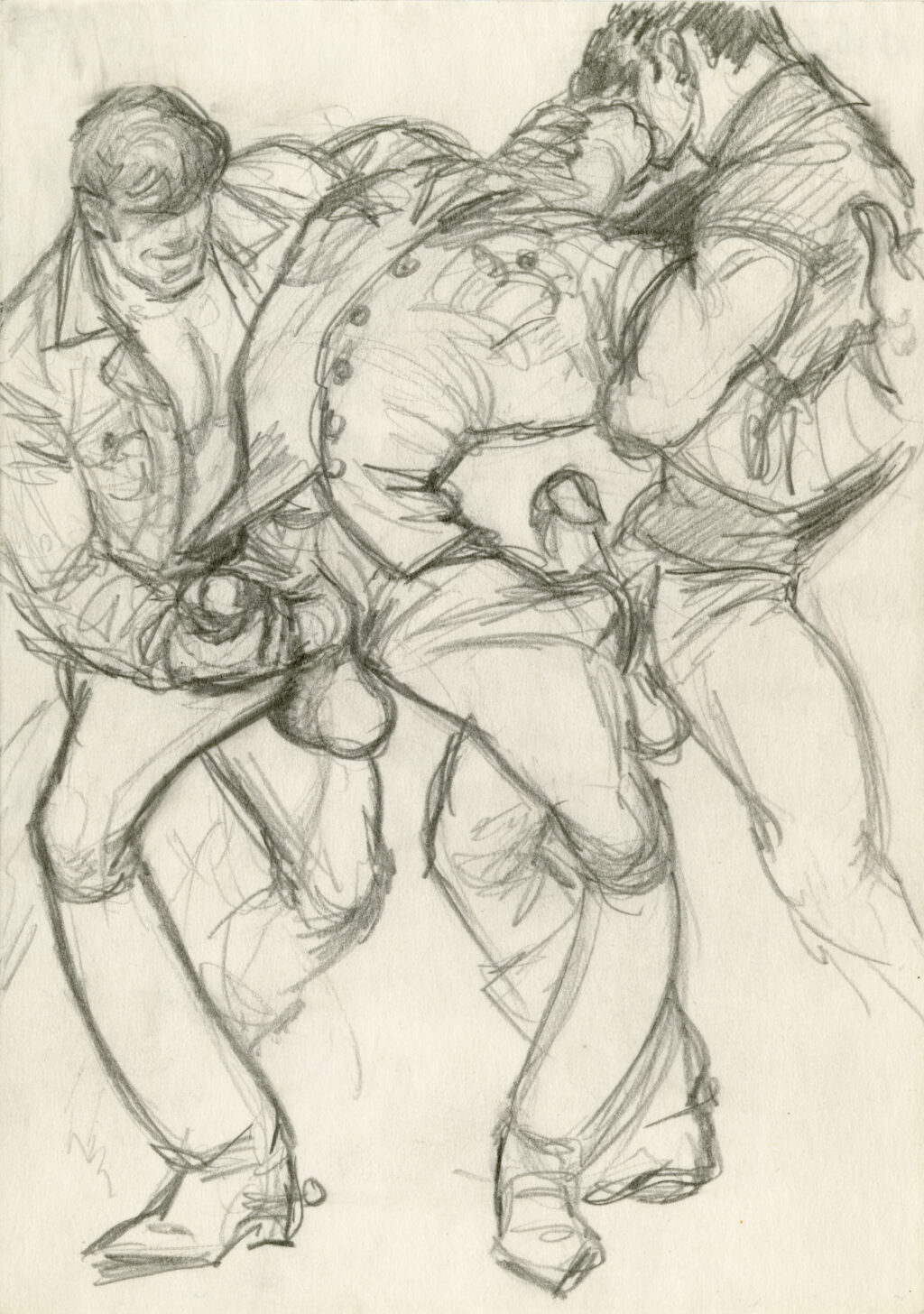
Untitled (Preparatory drawing)
c. 1965
Graphite on paper
21 × 15.2 cm

Untitled (Preparatory drawing)
c. 1965
Graphite on paper
21 × 14.8 cm
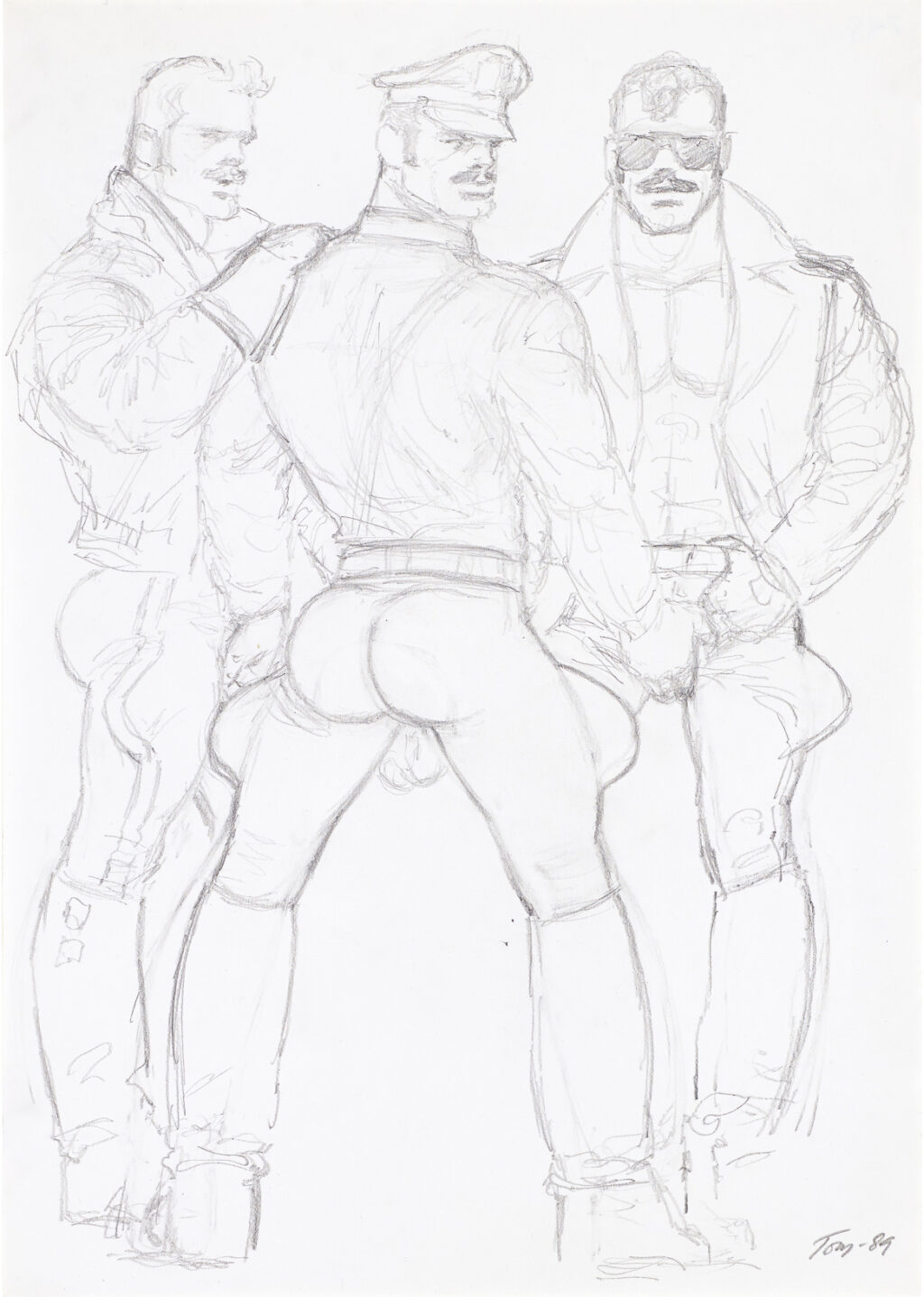
Untitled (Preparatory drawing)
1989
Graphite on paper
29.5 × 20.9 cm

Untitled (Preparatory drawing)
c. 1965
Graphite on paper
29.8 × 21 cm
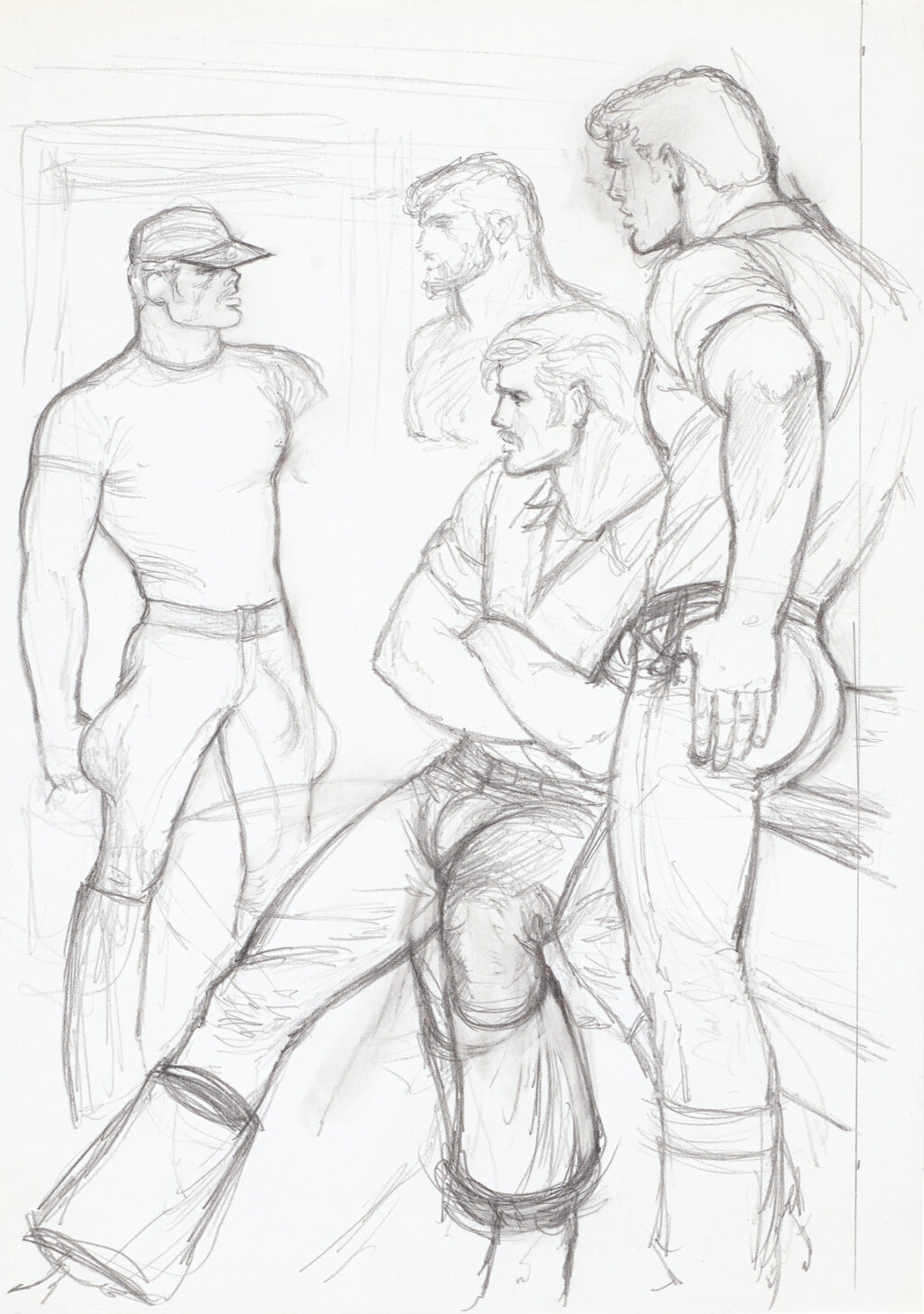
Untitled (Preparatory drawing for “The Loggers” V)
1979
Graphite on paper
27 × 21.1 cm
Text
Tom of Finland is embedded in our cultural and visual memory with his drawings. As one of the most influential artists of the 20th century, he easily combines various superlatives. Tom of Finland is an icon of the gay movement, of fashion and fetish, of art history, and of pop culture in particular. His legacy is enduring, having inspired the likes of David Hockney and Jean Paul Gautier, Freddie Mercury and Robert Mapplethorpe – and many others to this day.
It is easy to forget the real person and the story behind the pseudonym: Touko Laaksonen, born in Finland in 1920, started out as a musician, turned into a successful commercial artist and, from the 1940s onwards, created the work we associate with him today as a sideline. The need of a pseudonym reflects not least the illegality at that time of his explicit depictions of gay sex. It was only in later years that Tom was able to devote himself fully to his art making.
Tom of Finland’s powerful, handsome, proud gay men established a new prototype of physical and mental, almost unattainable, perfection. To this day, it remains a powerful endorsement of self-confidence and sexual self-determination, far beyond queer circles.
From today’s perspective, not every aspect of what was undeniably progressive back then meets our modern-day standards. The diversity and inclusivity that we have come to live and presuppose in society today can be found in Tom of Finland’s visual personnel only to a lesser extent. The fact that we see his relative homogeneity critically today is not least due to the pioneering emancipatory work of the artist himself. Especially at a time when the achievements of liberal societies are threatened by political extremes, this must nevertheless be addressed. Like Tom himself once did in another respect, it is important to articulate what this discussion is about: it is not specifically about queer rights. No, it is fundamentally about non-negotiable human rights.
